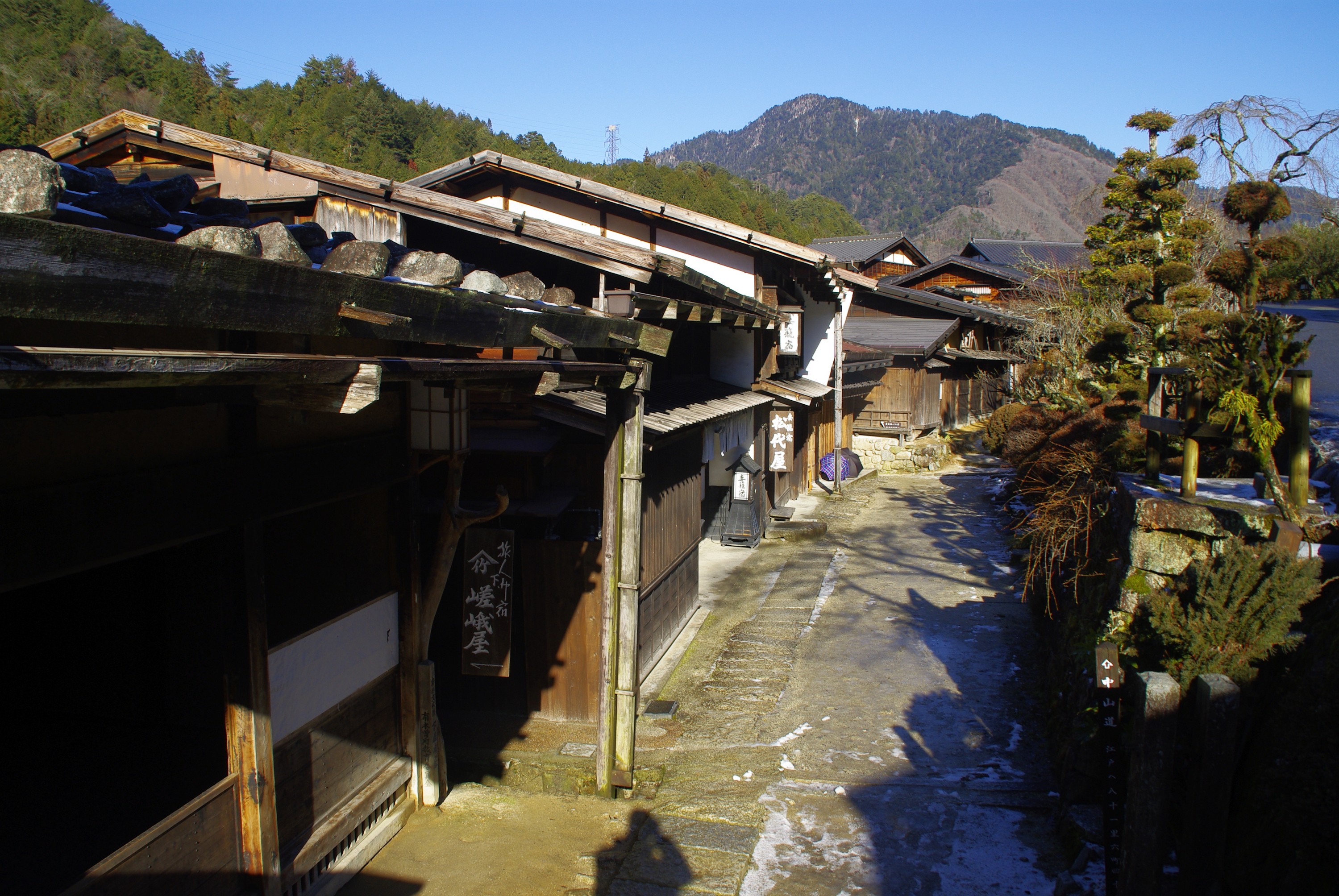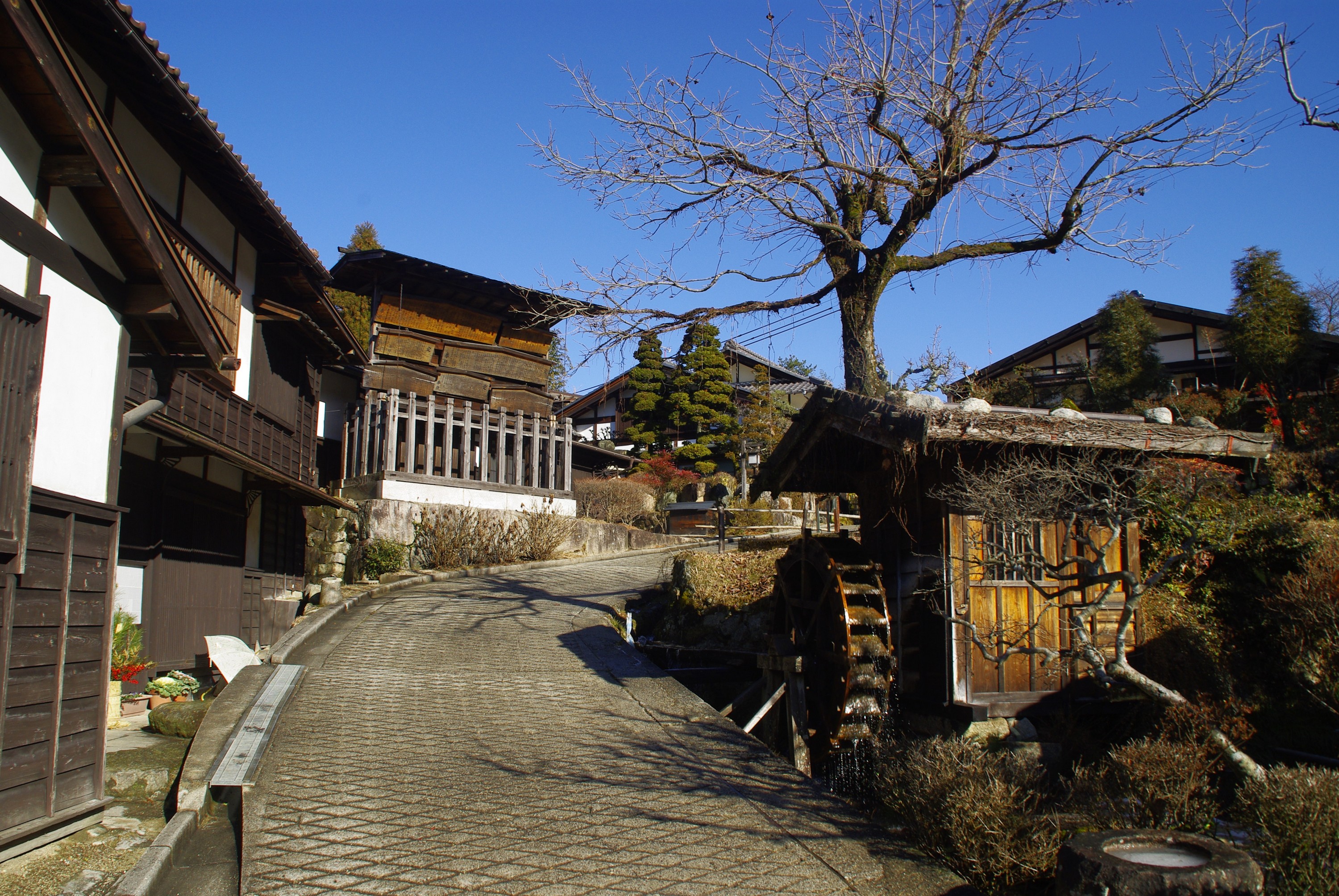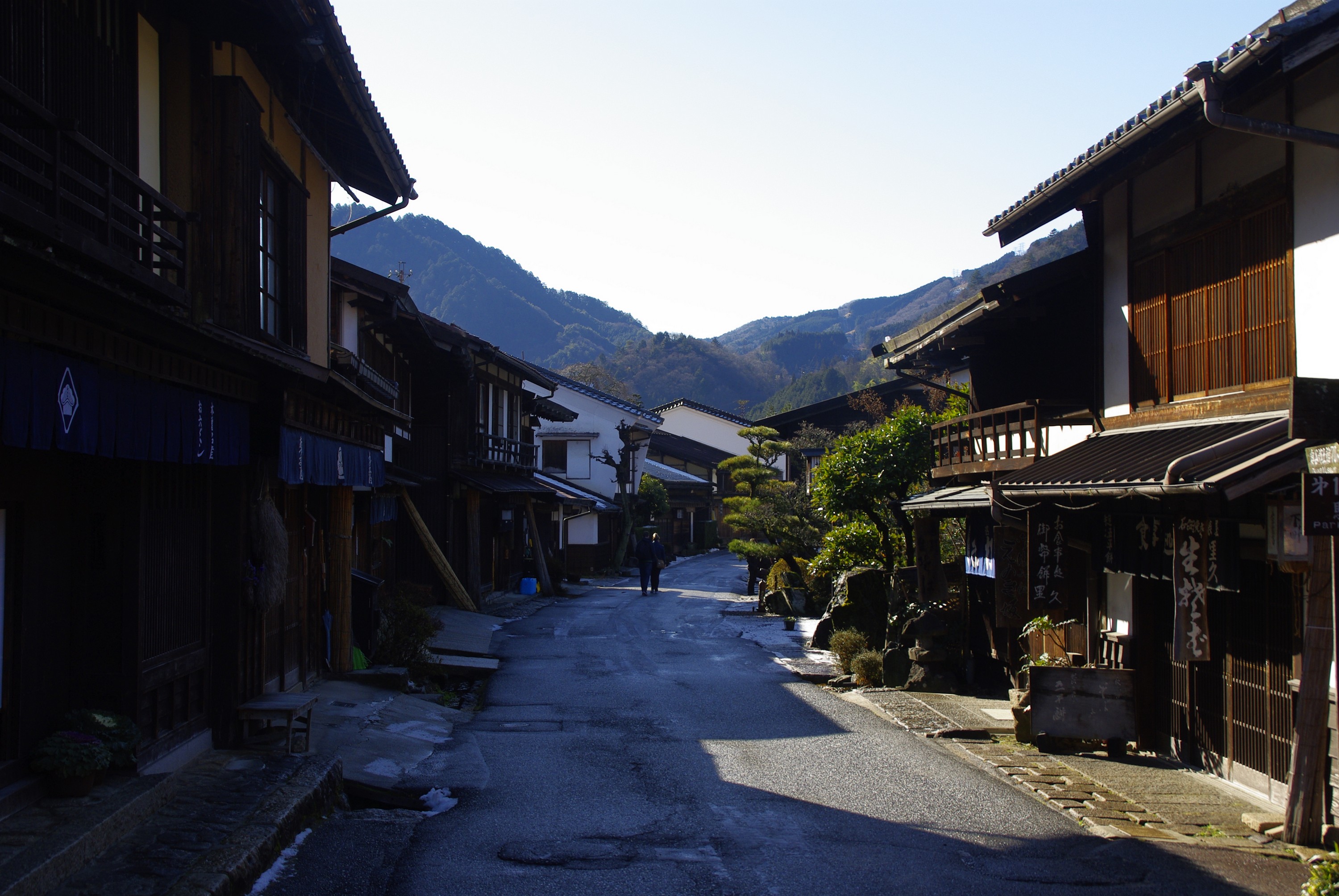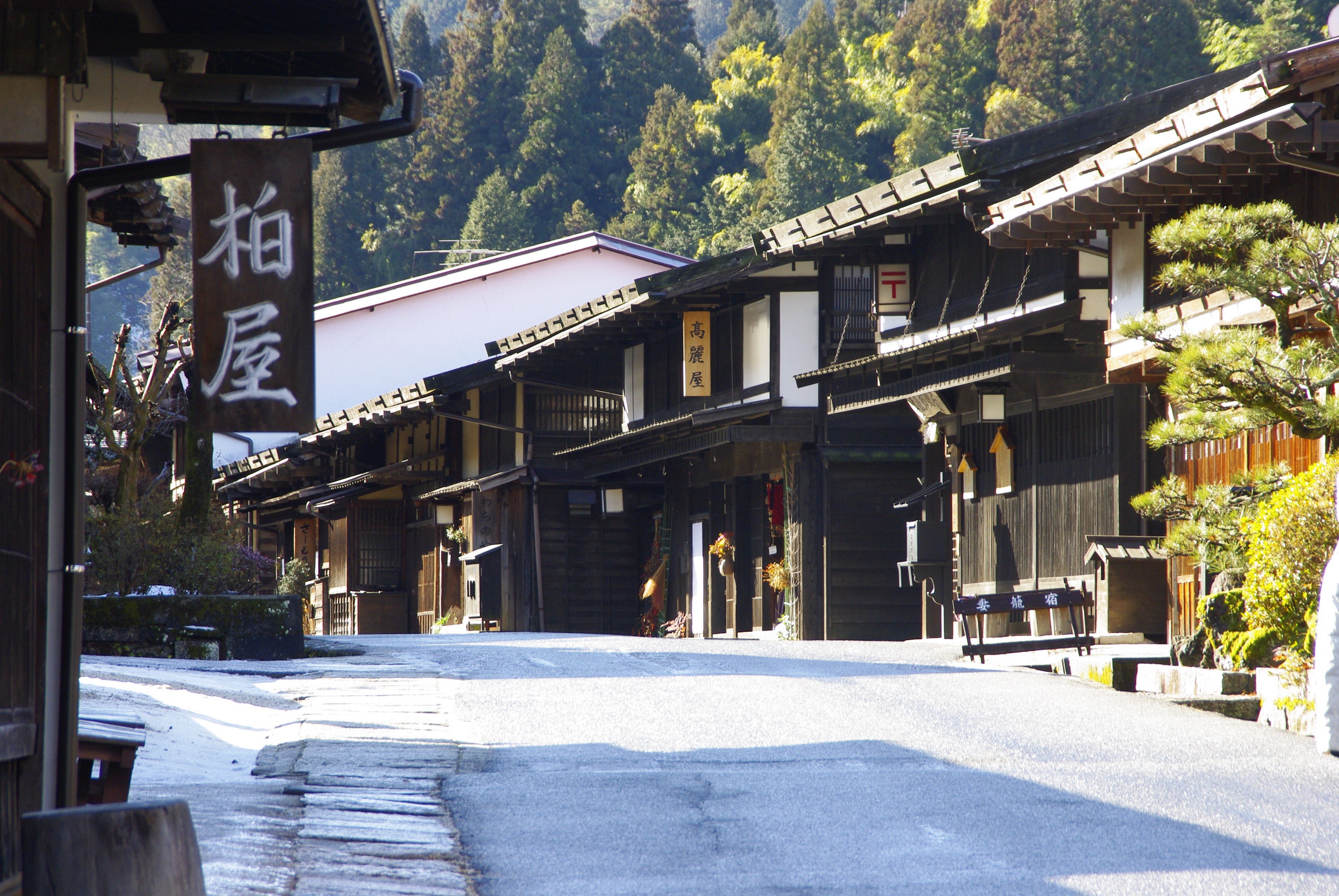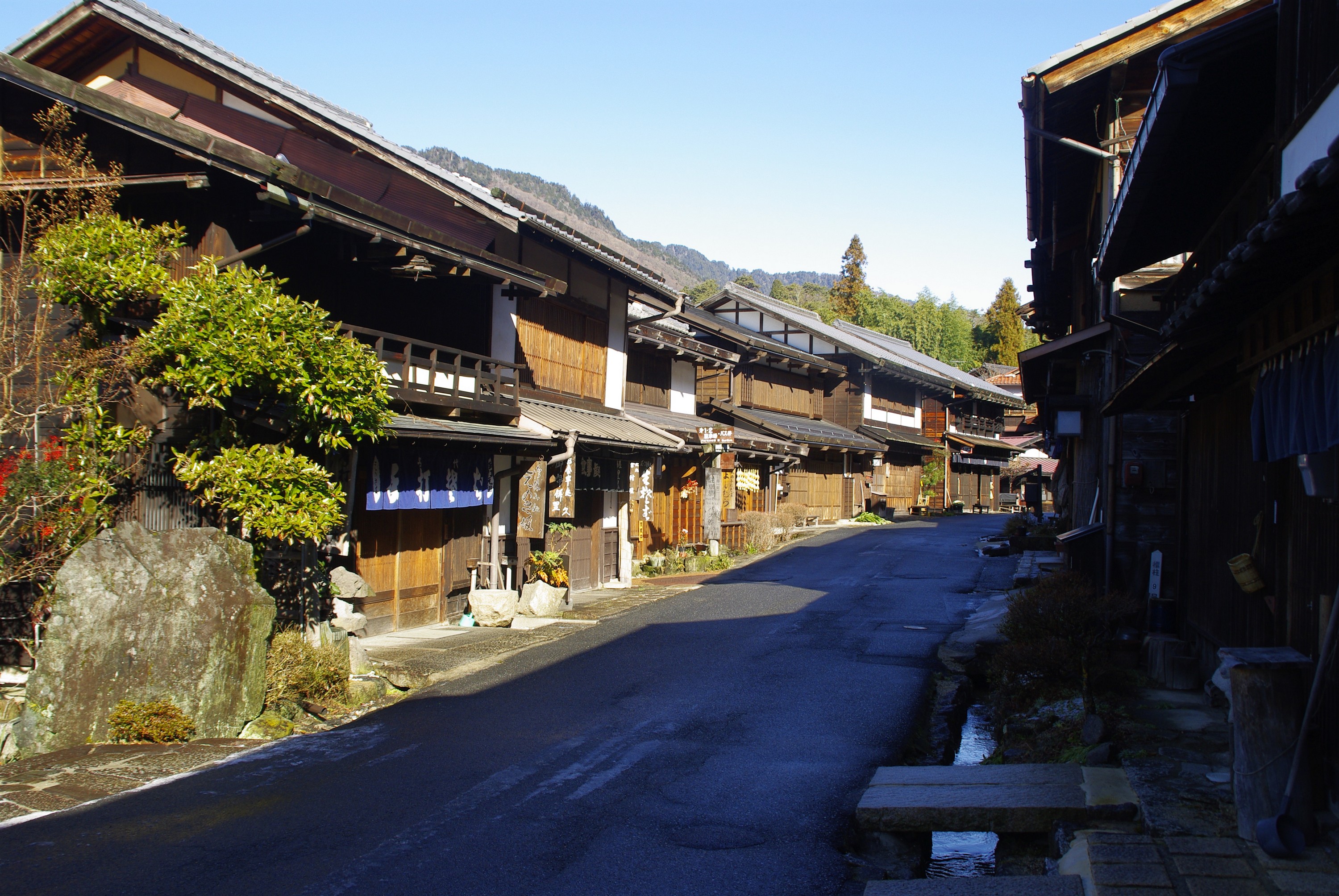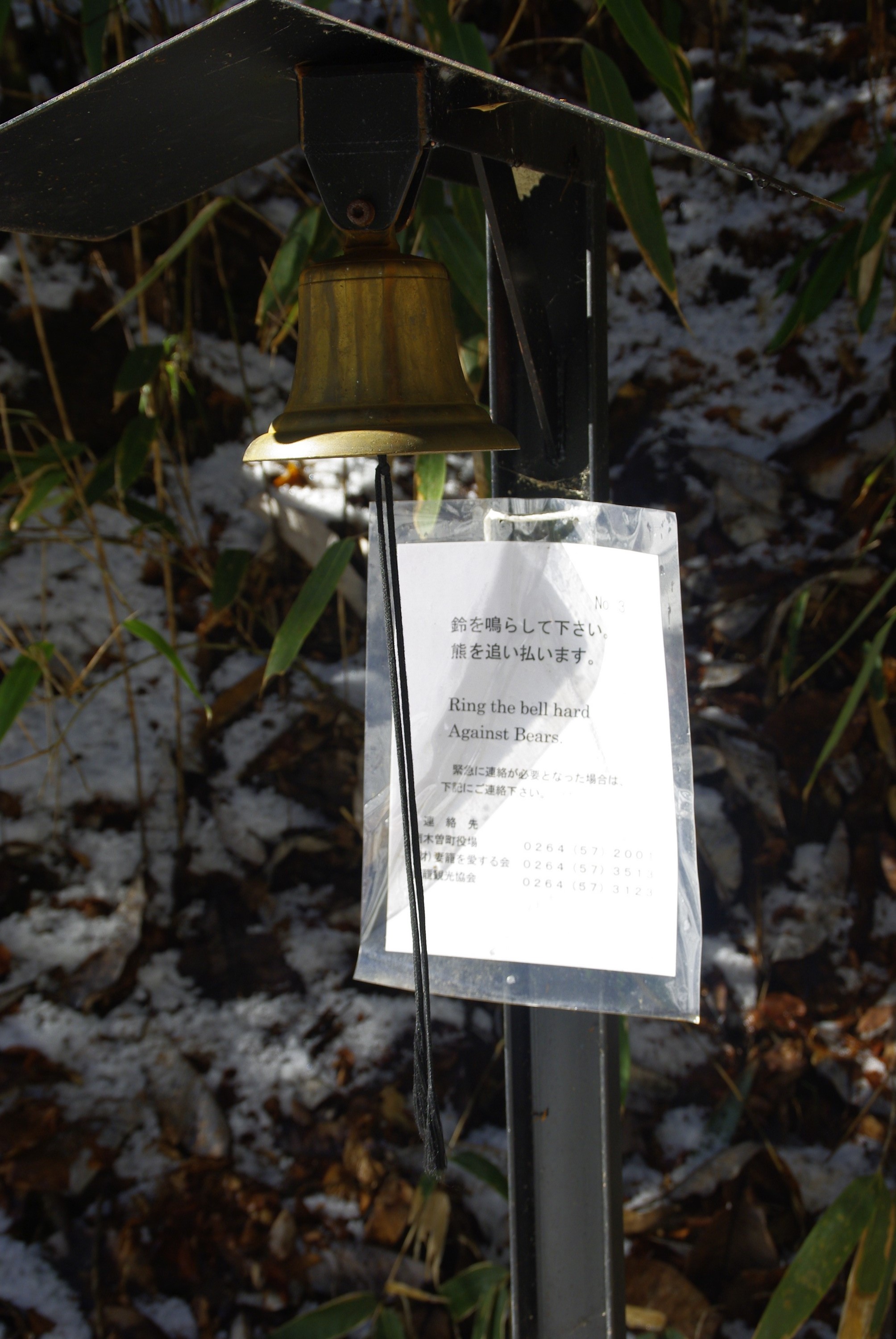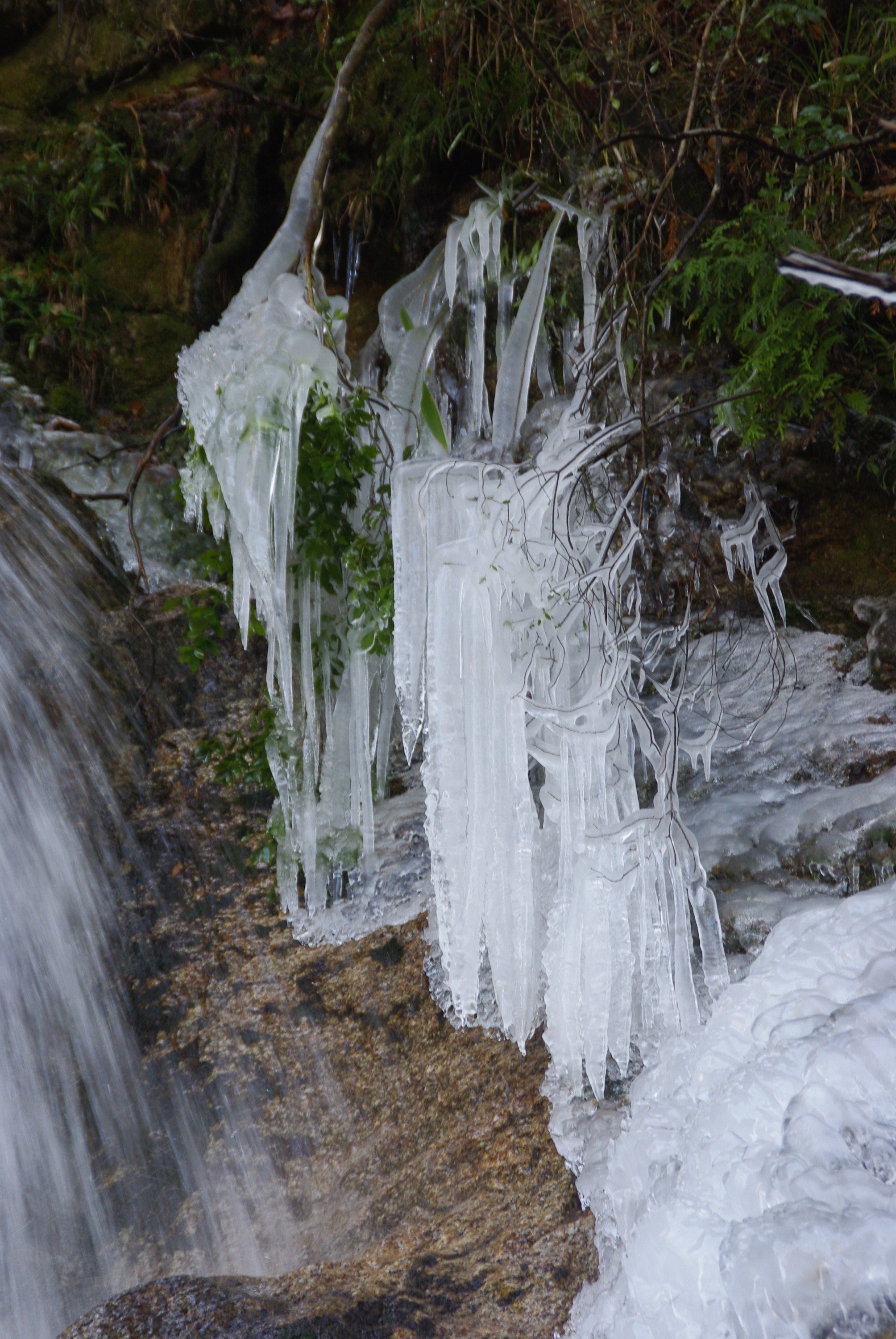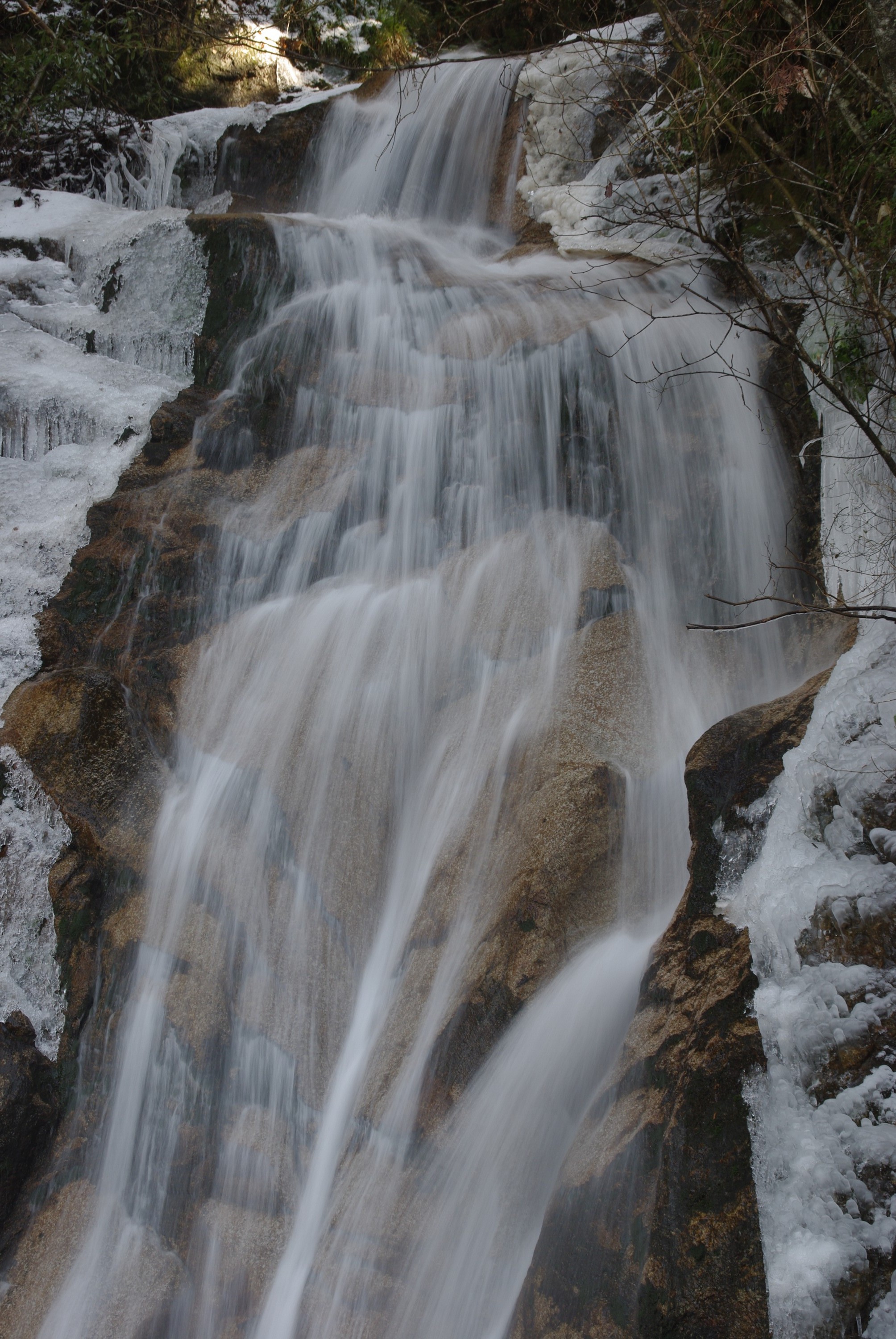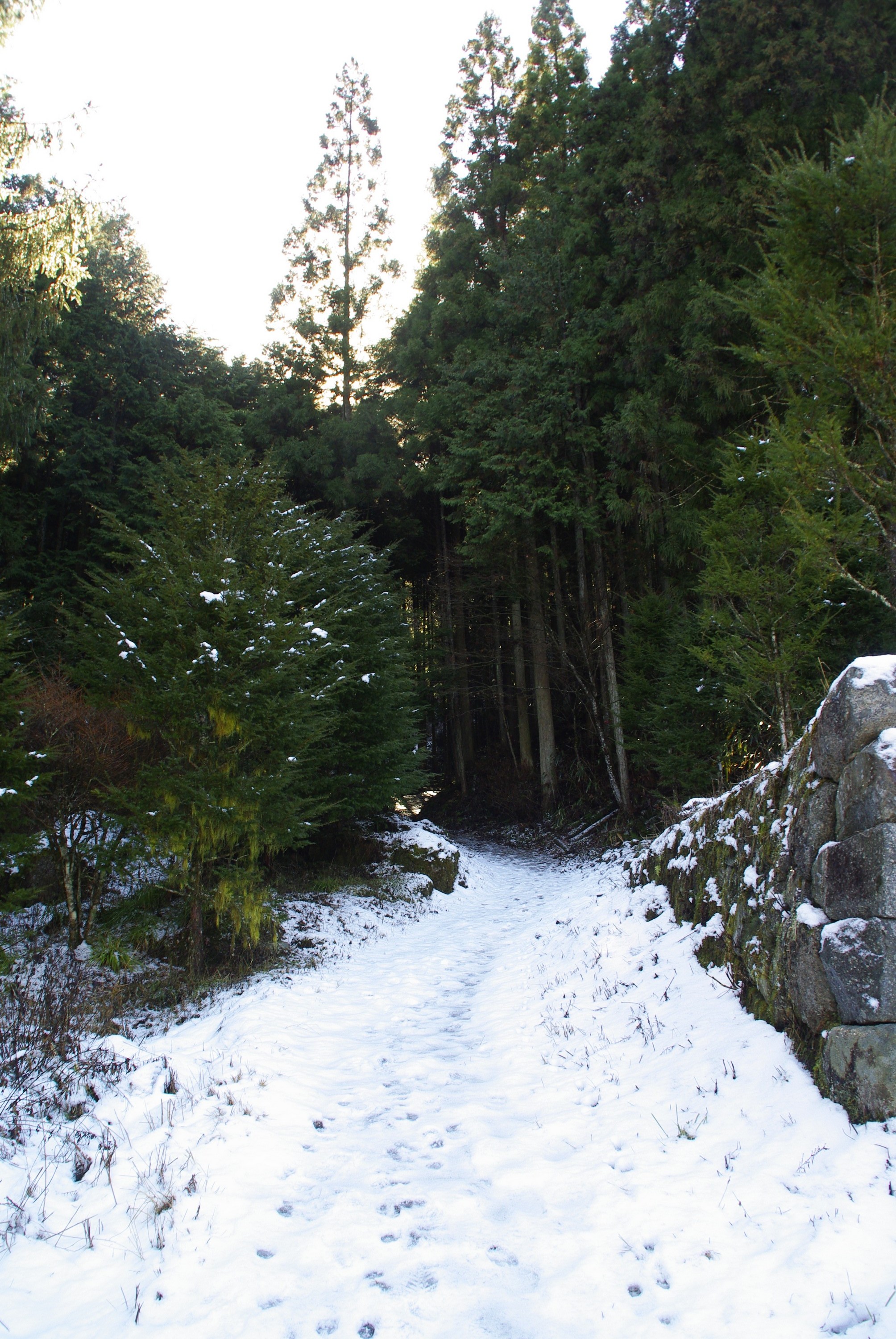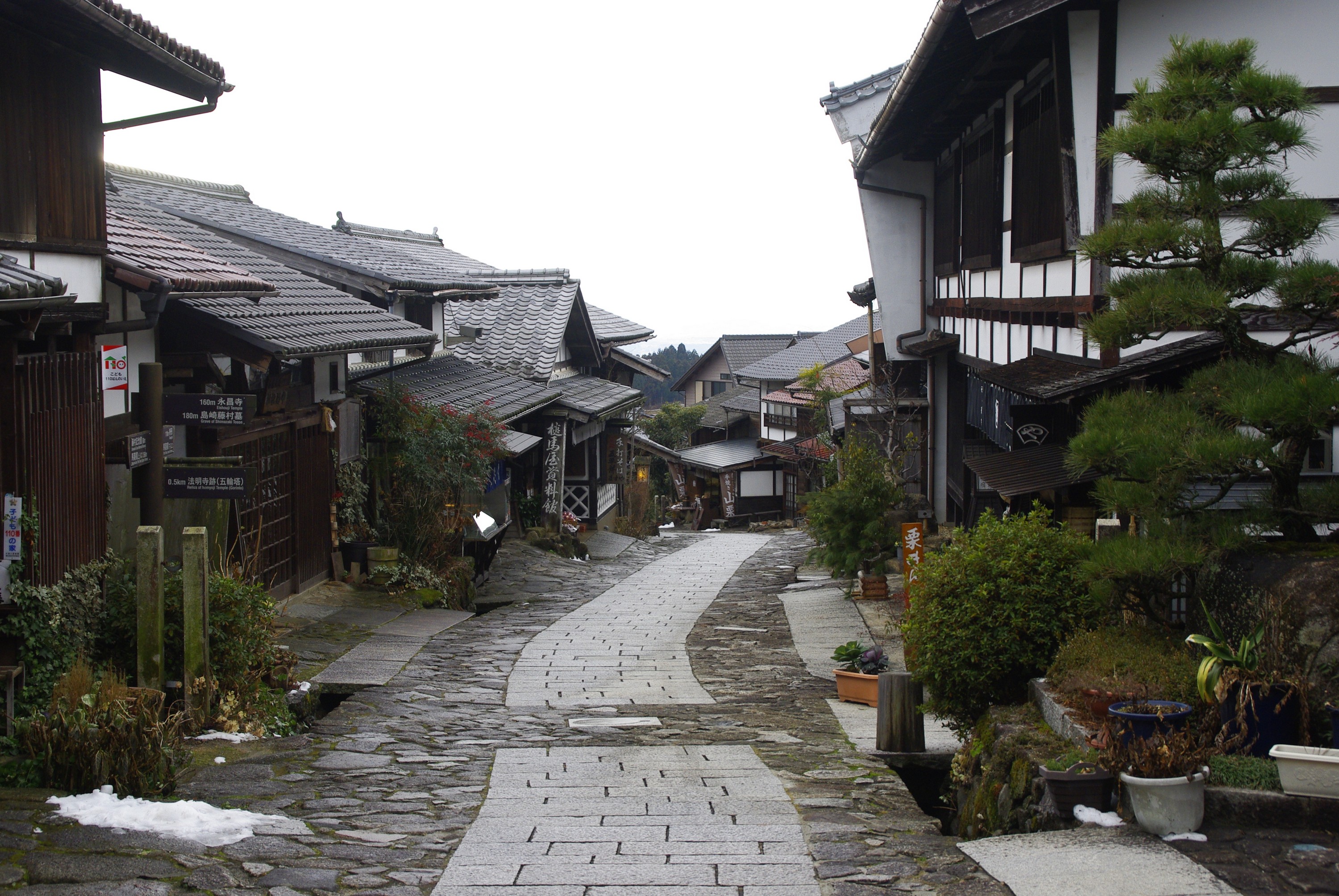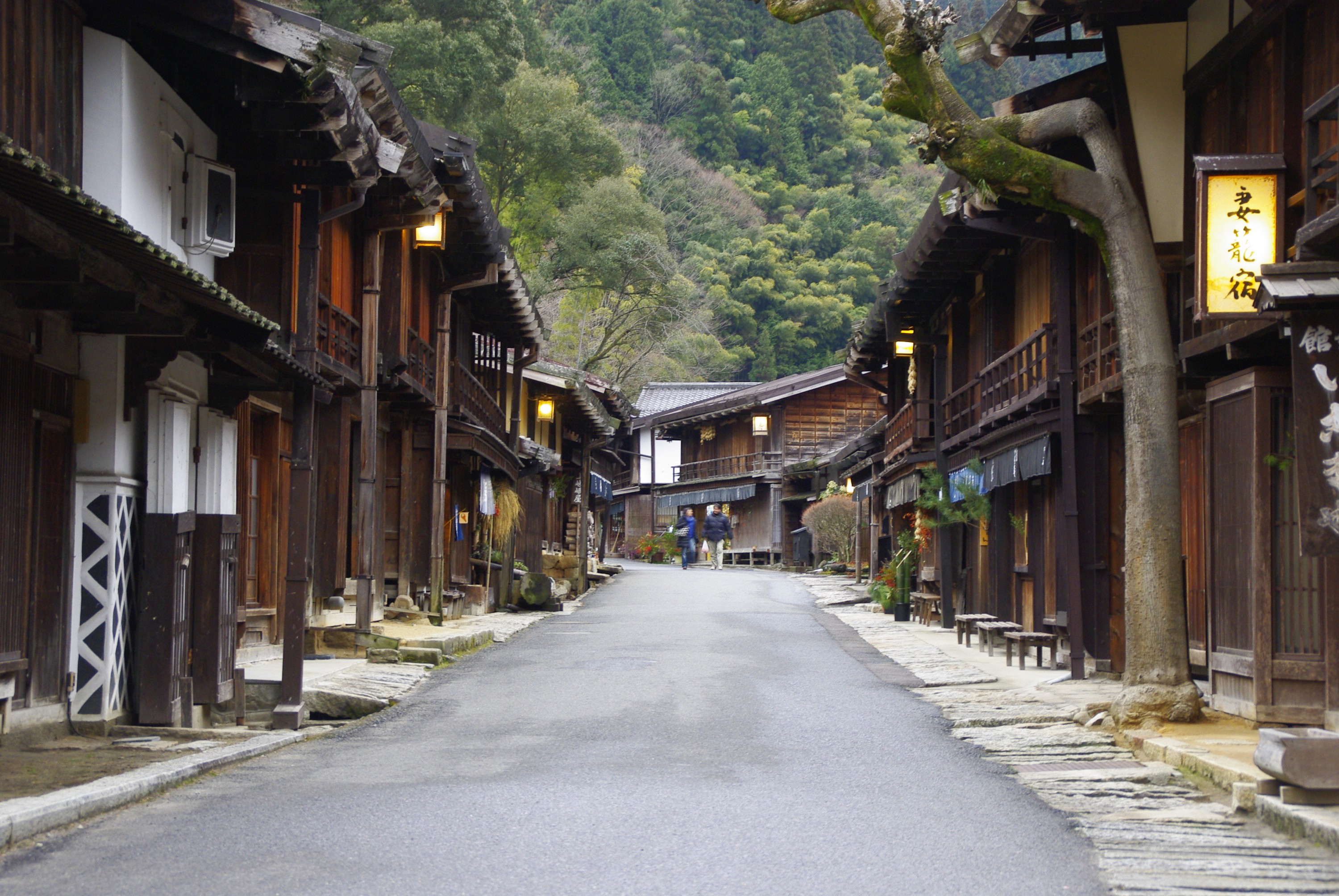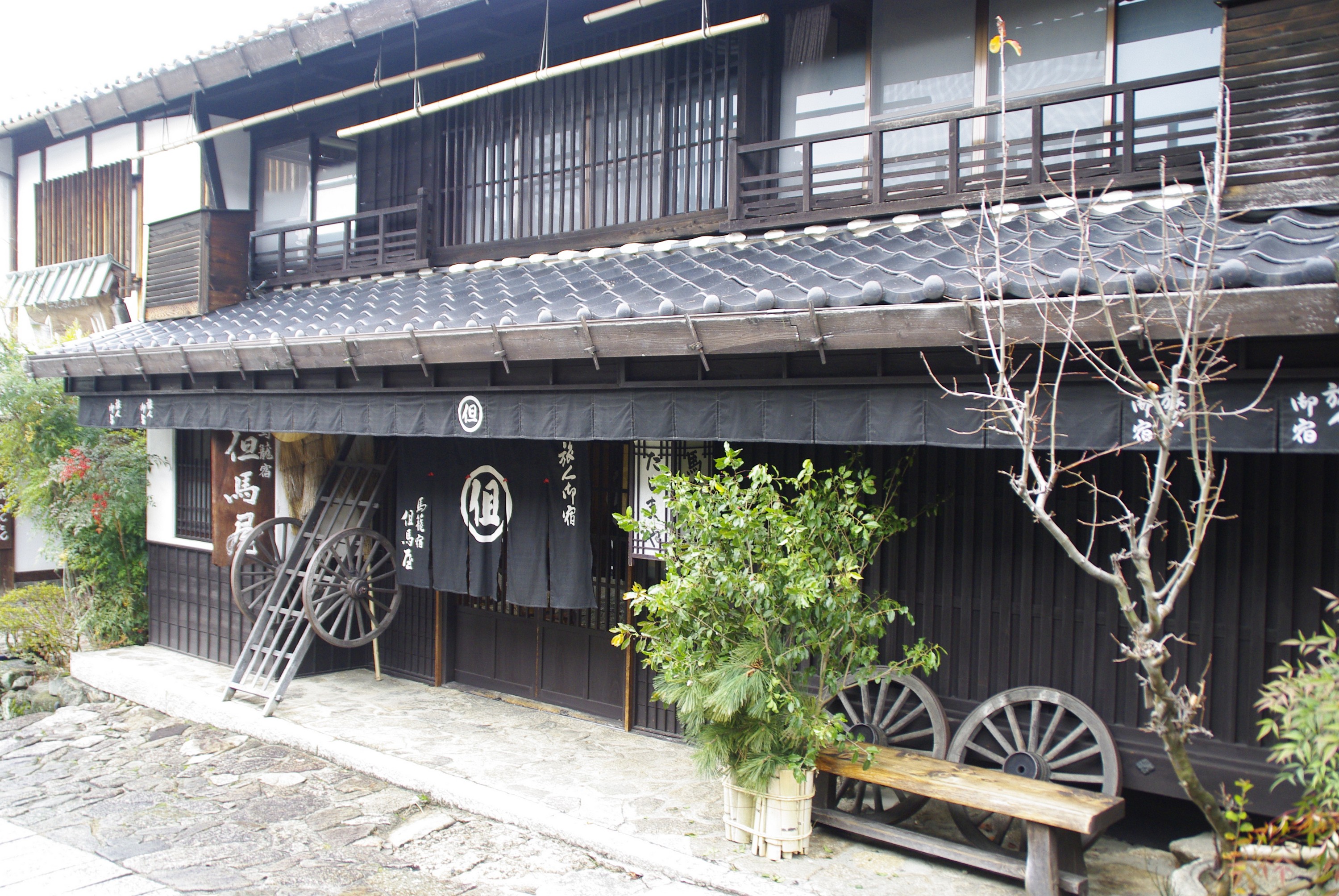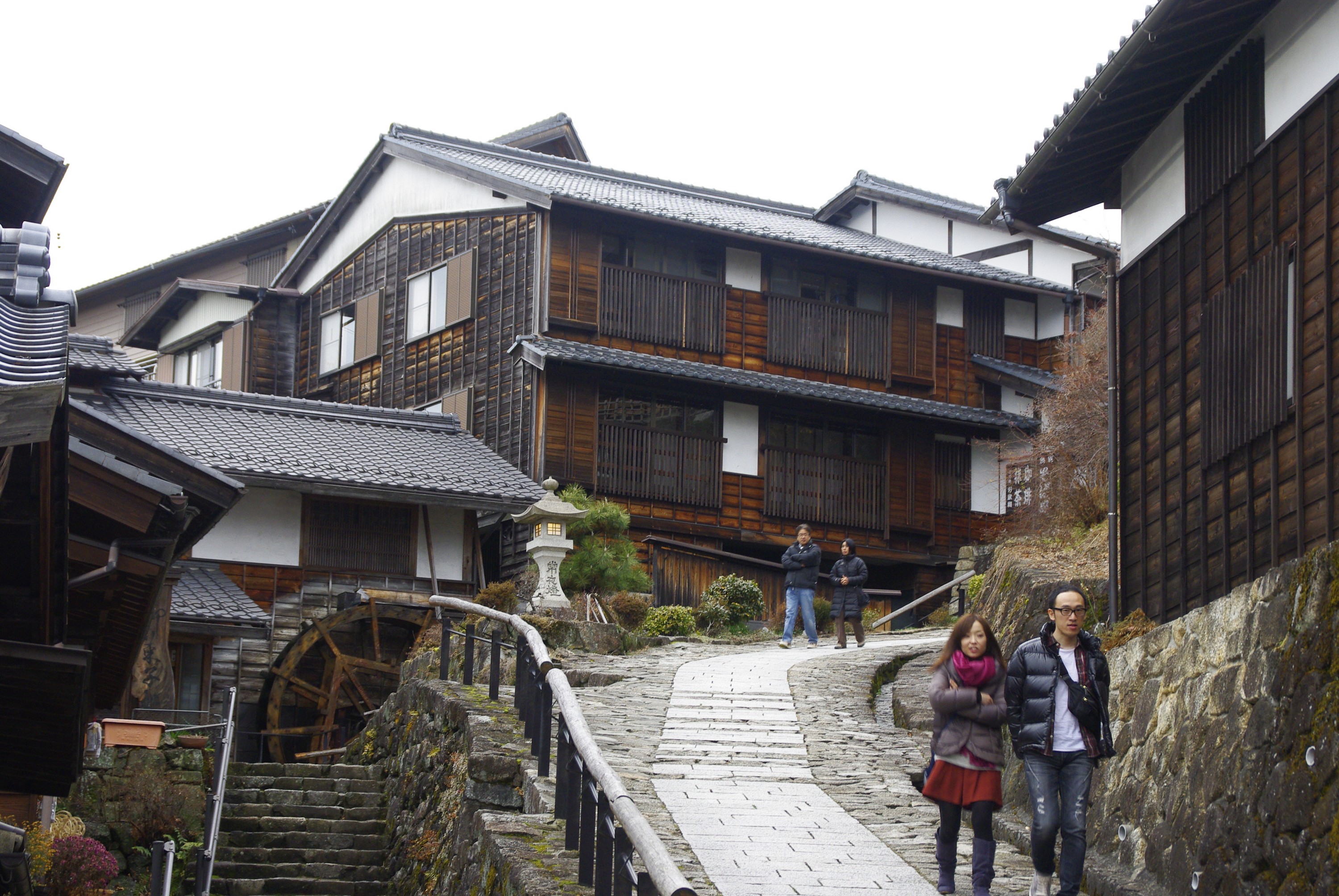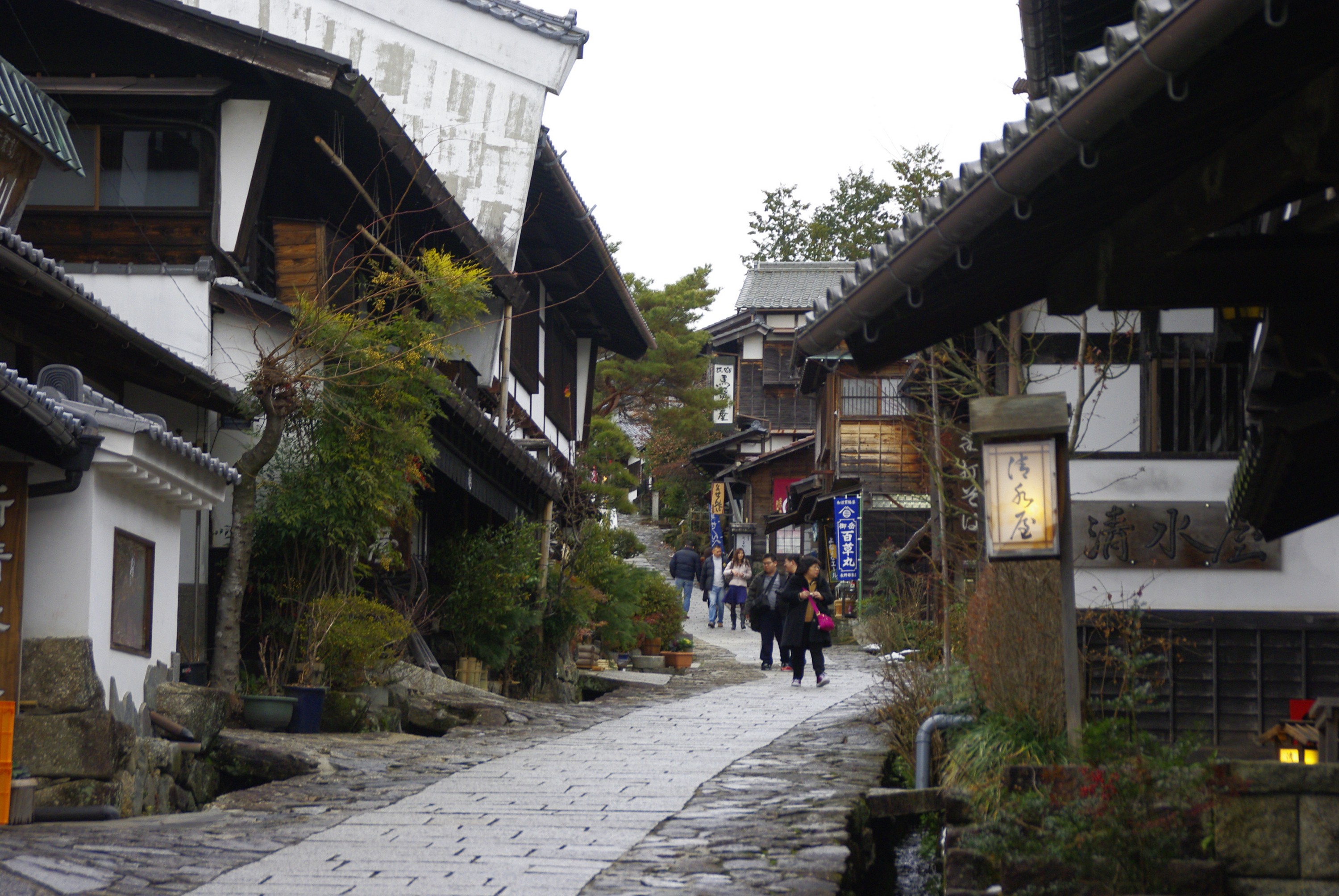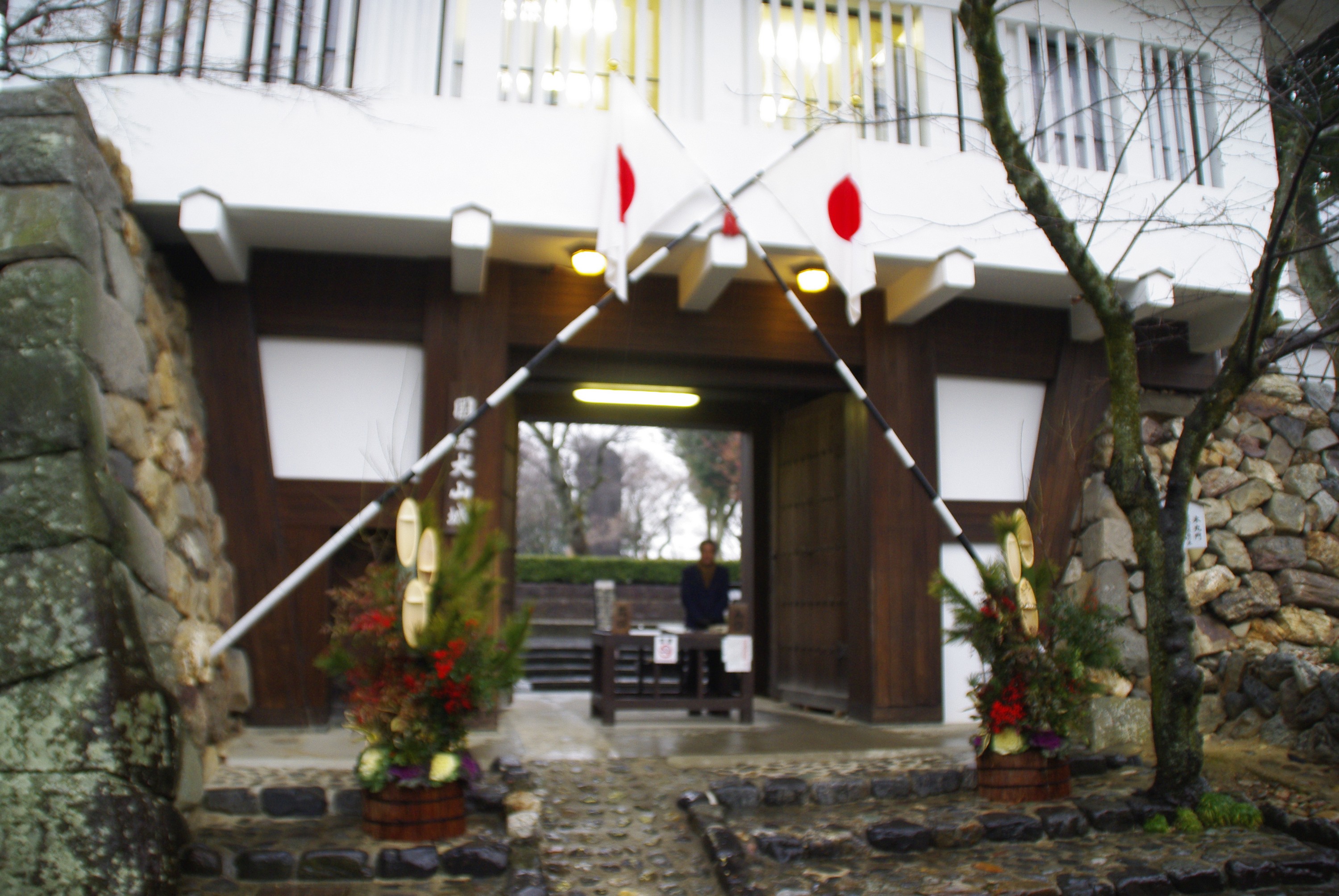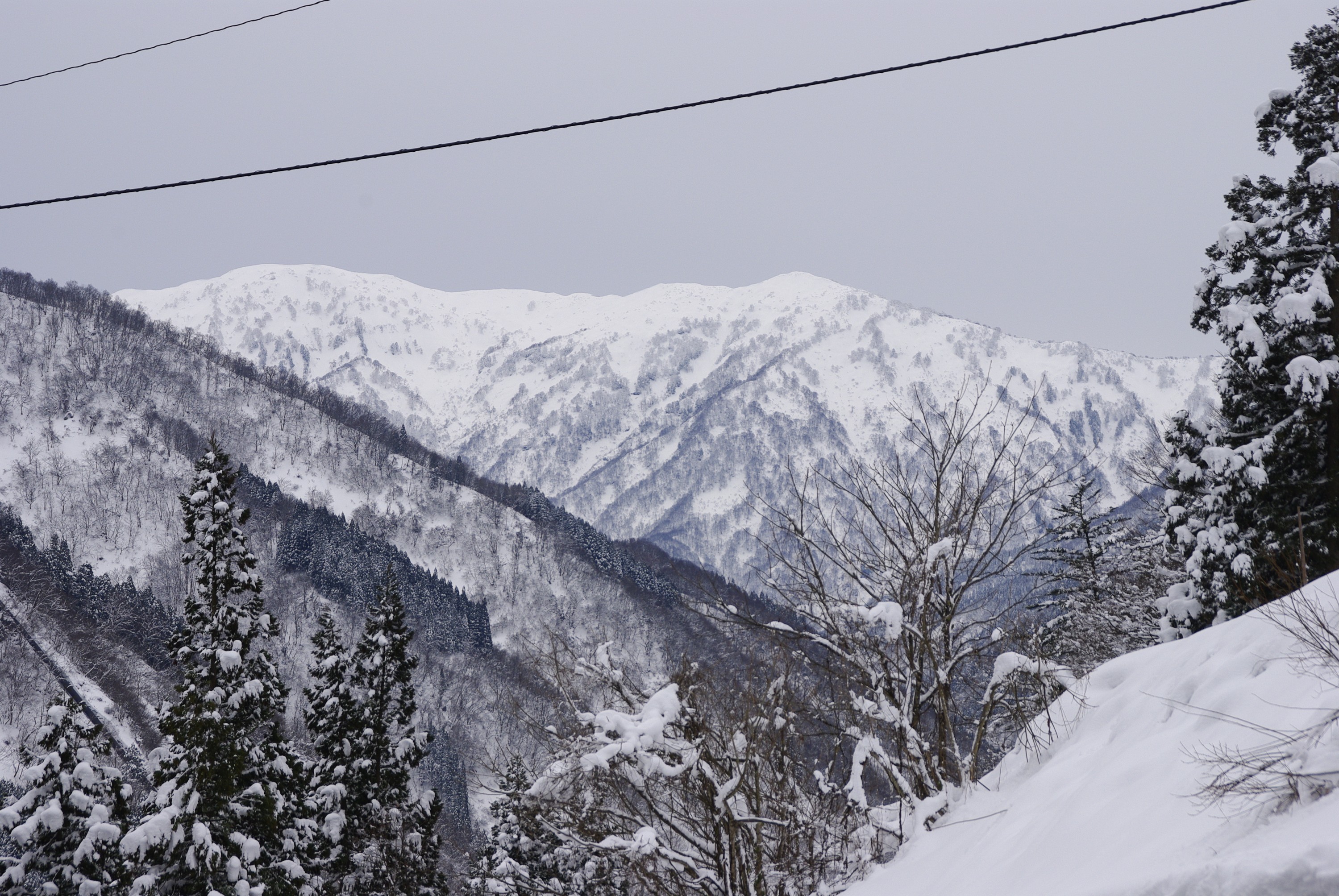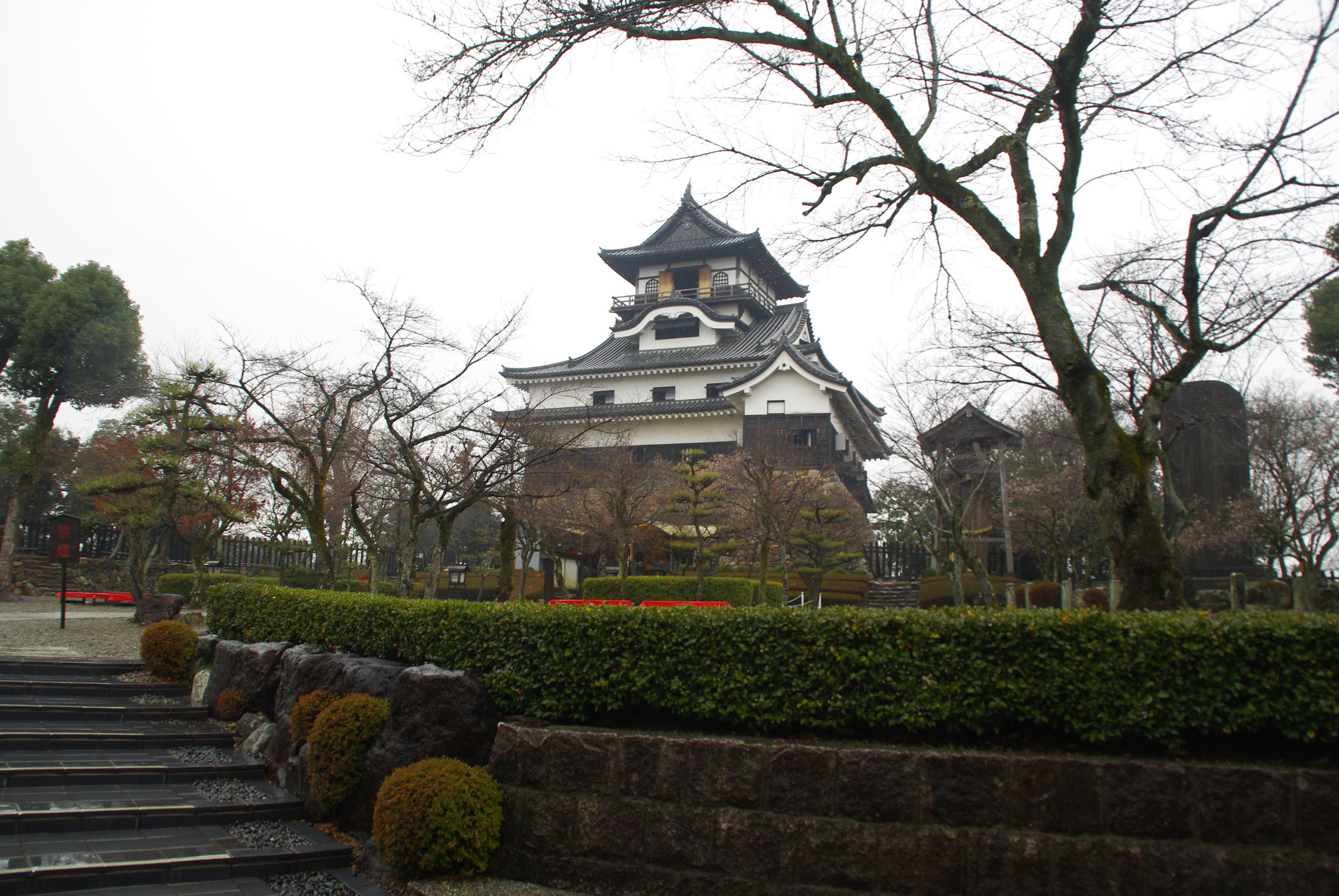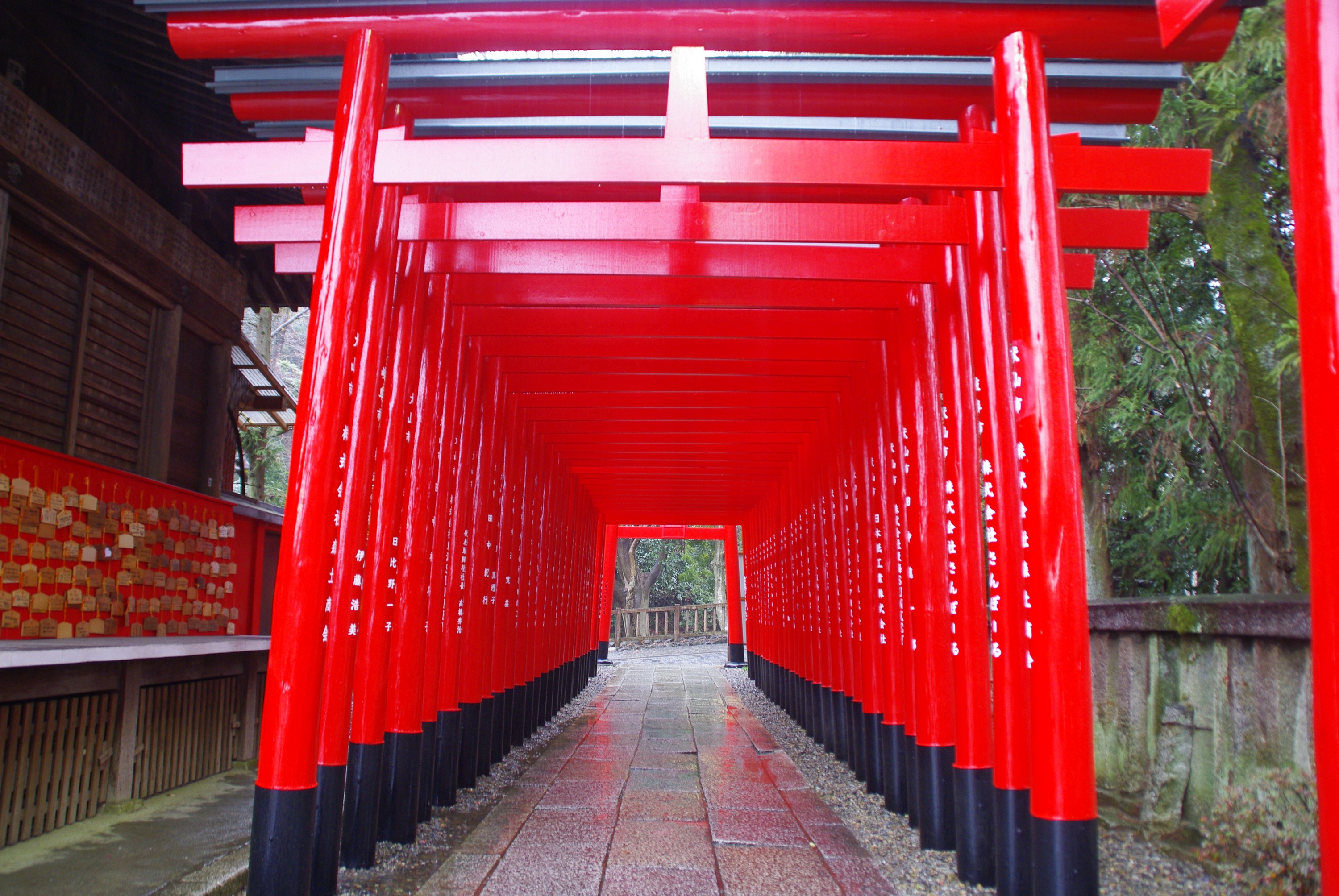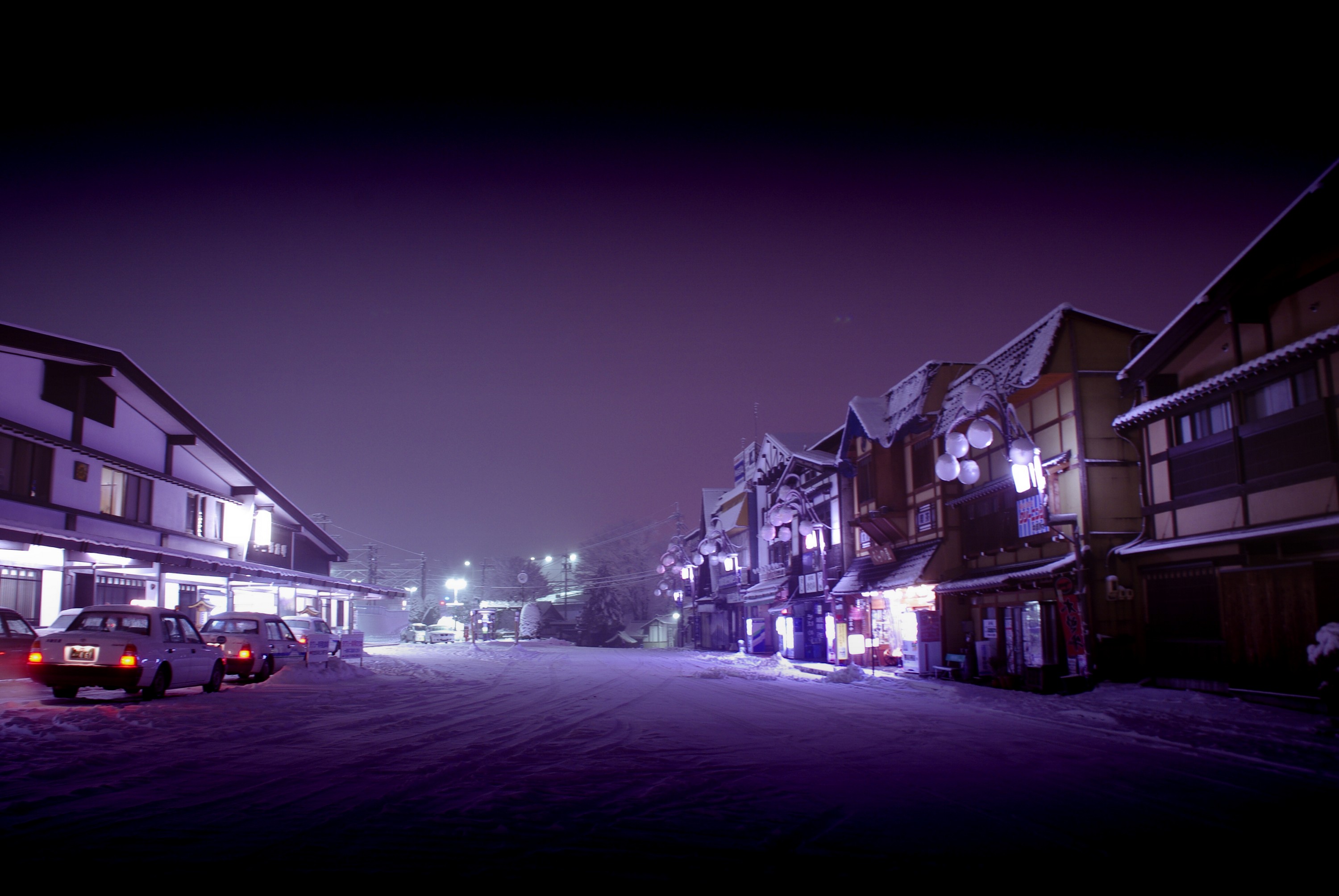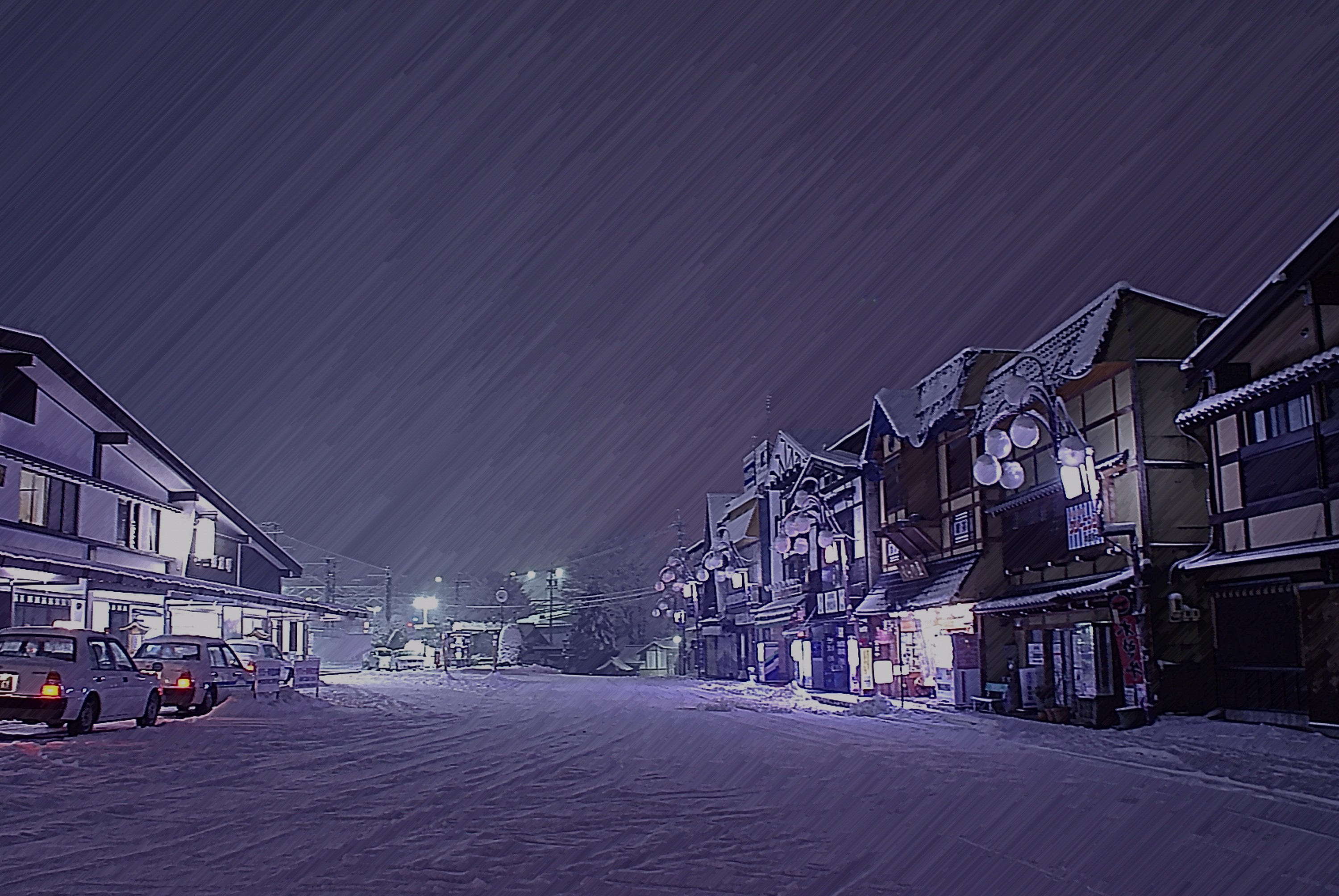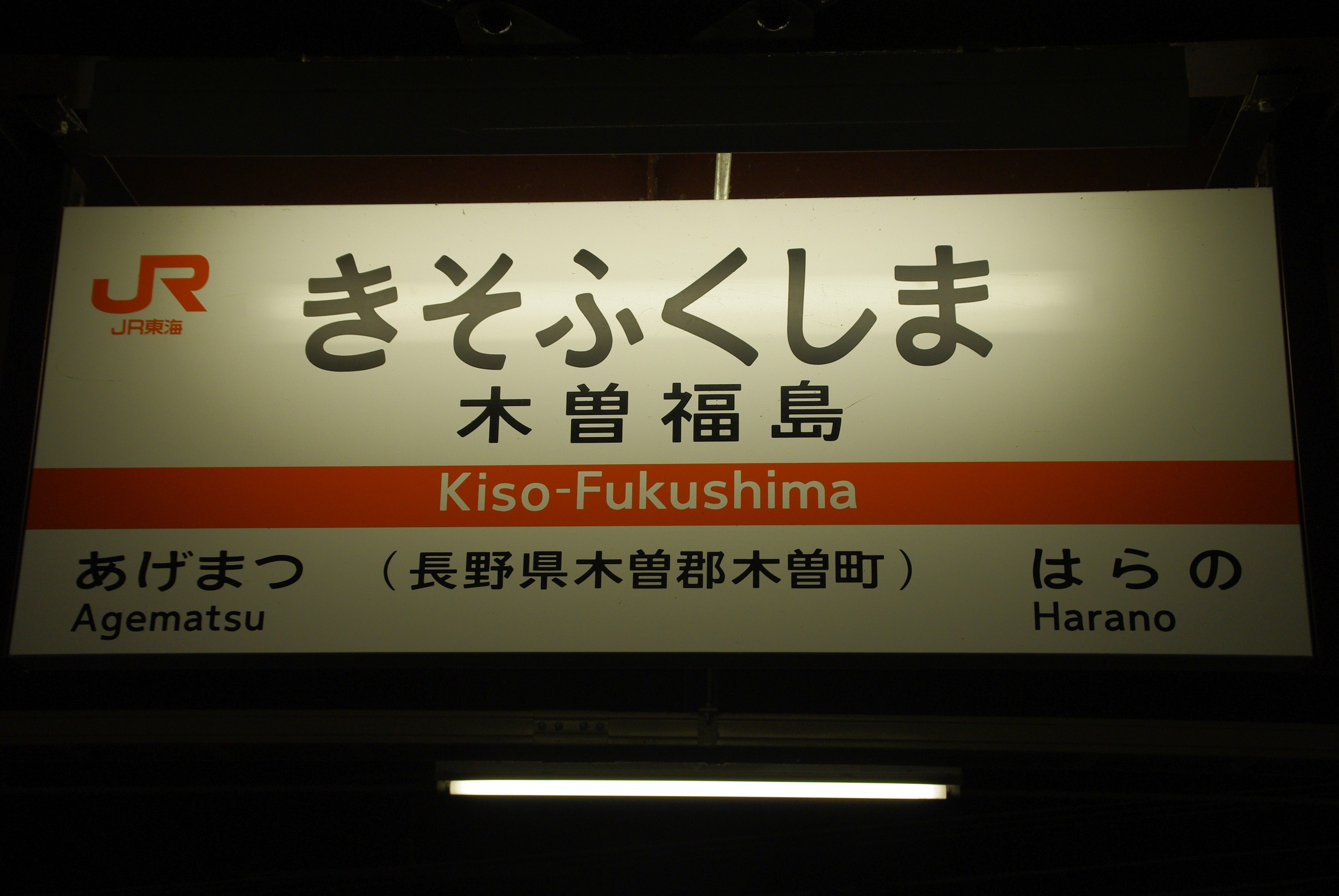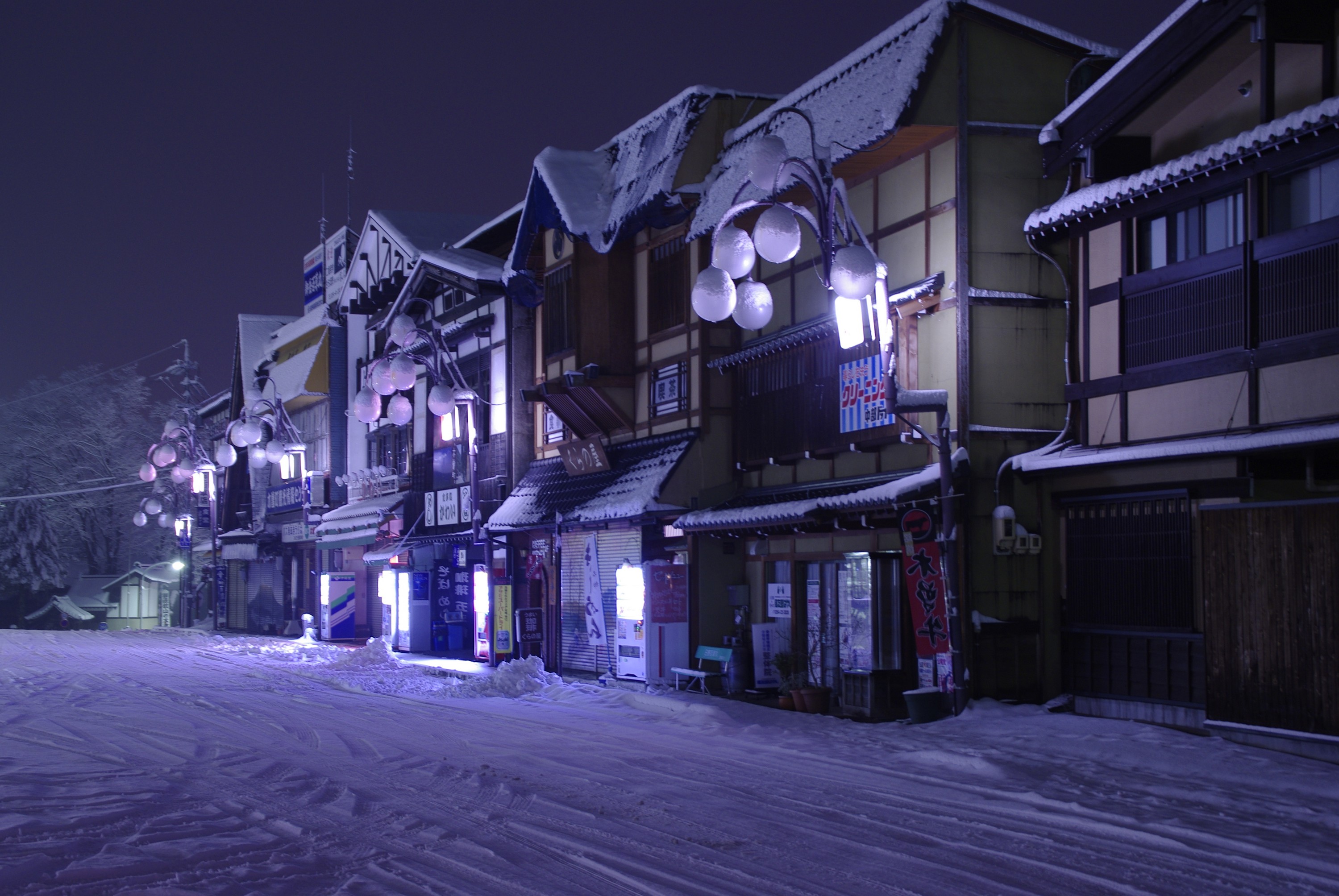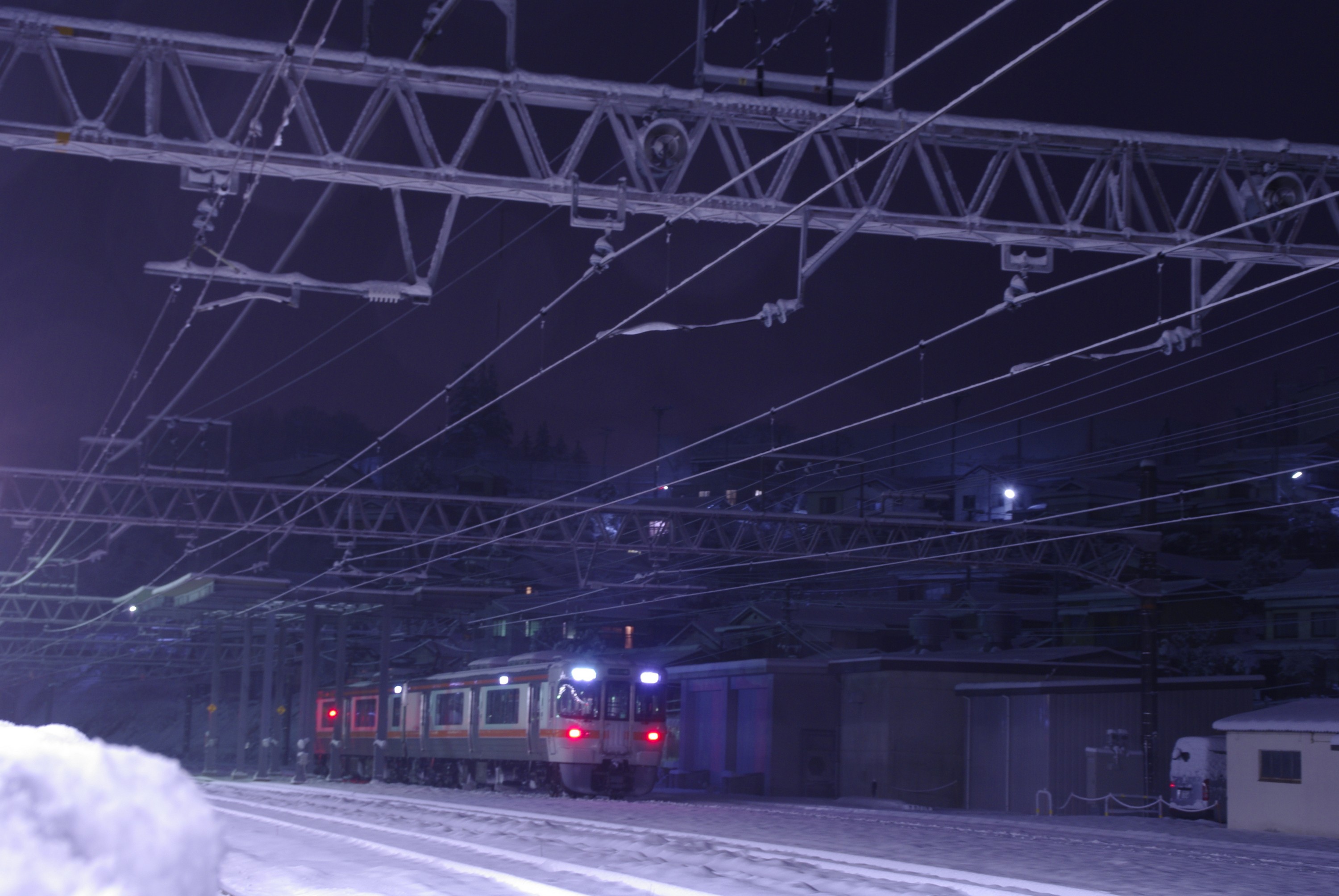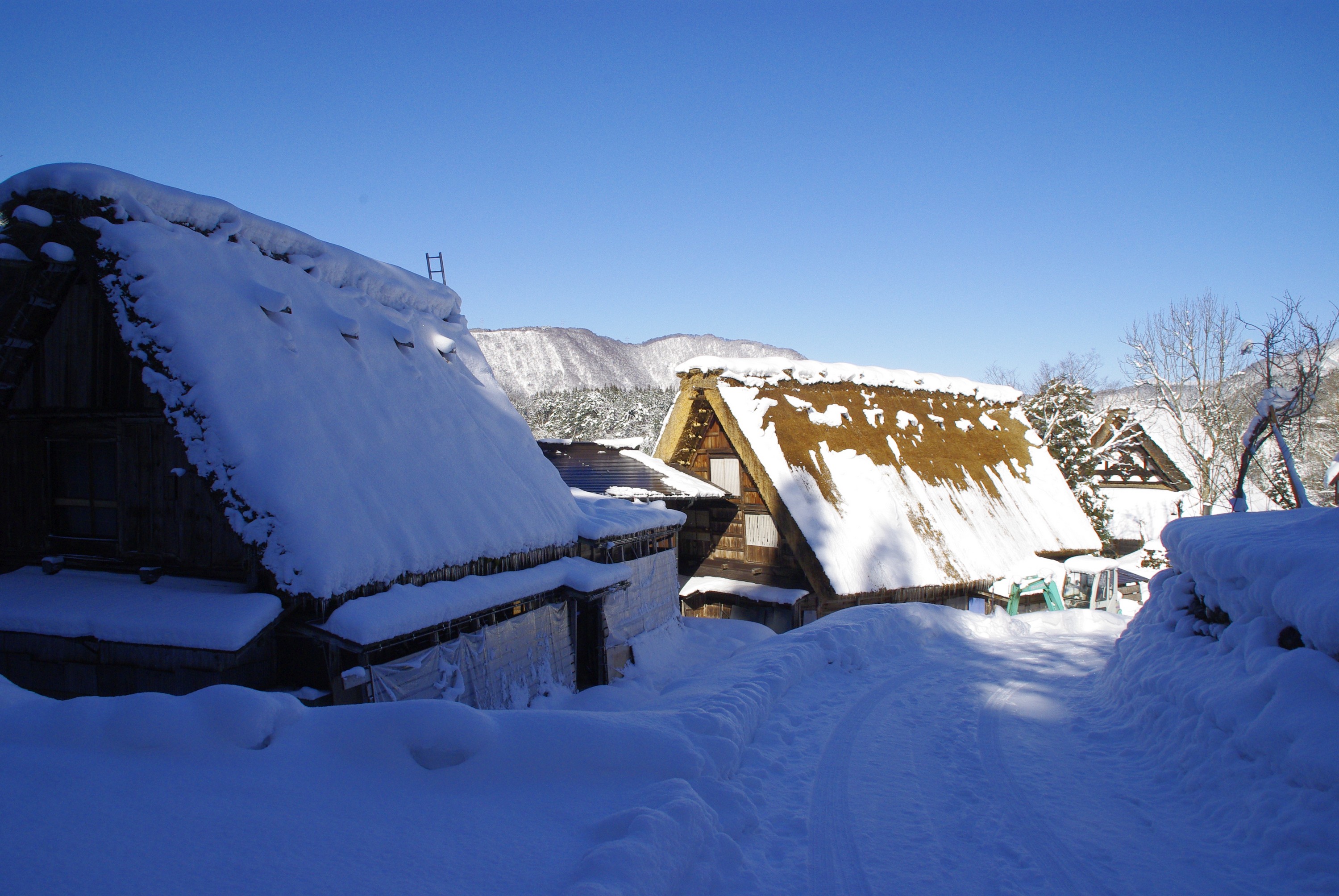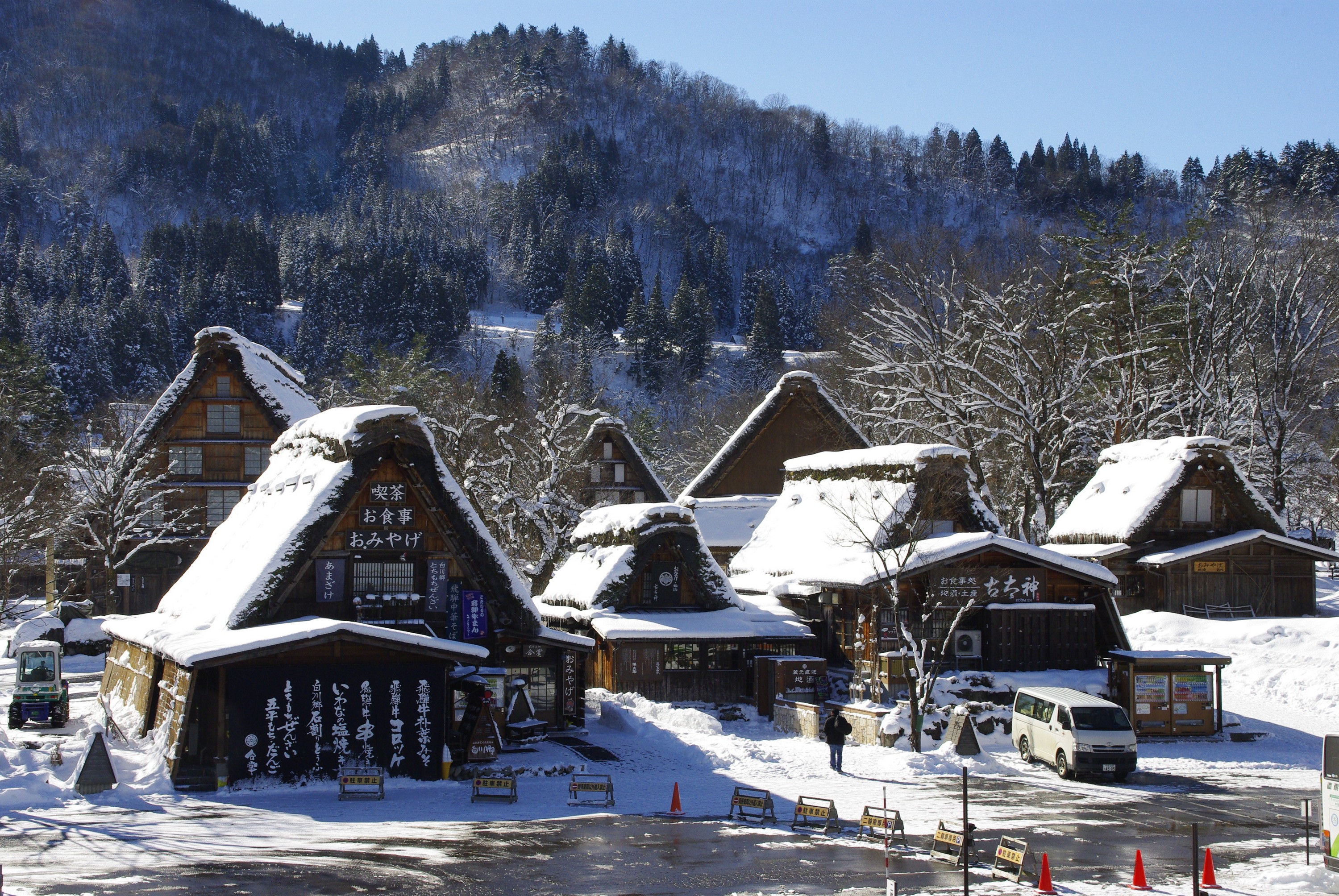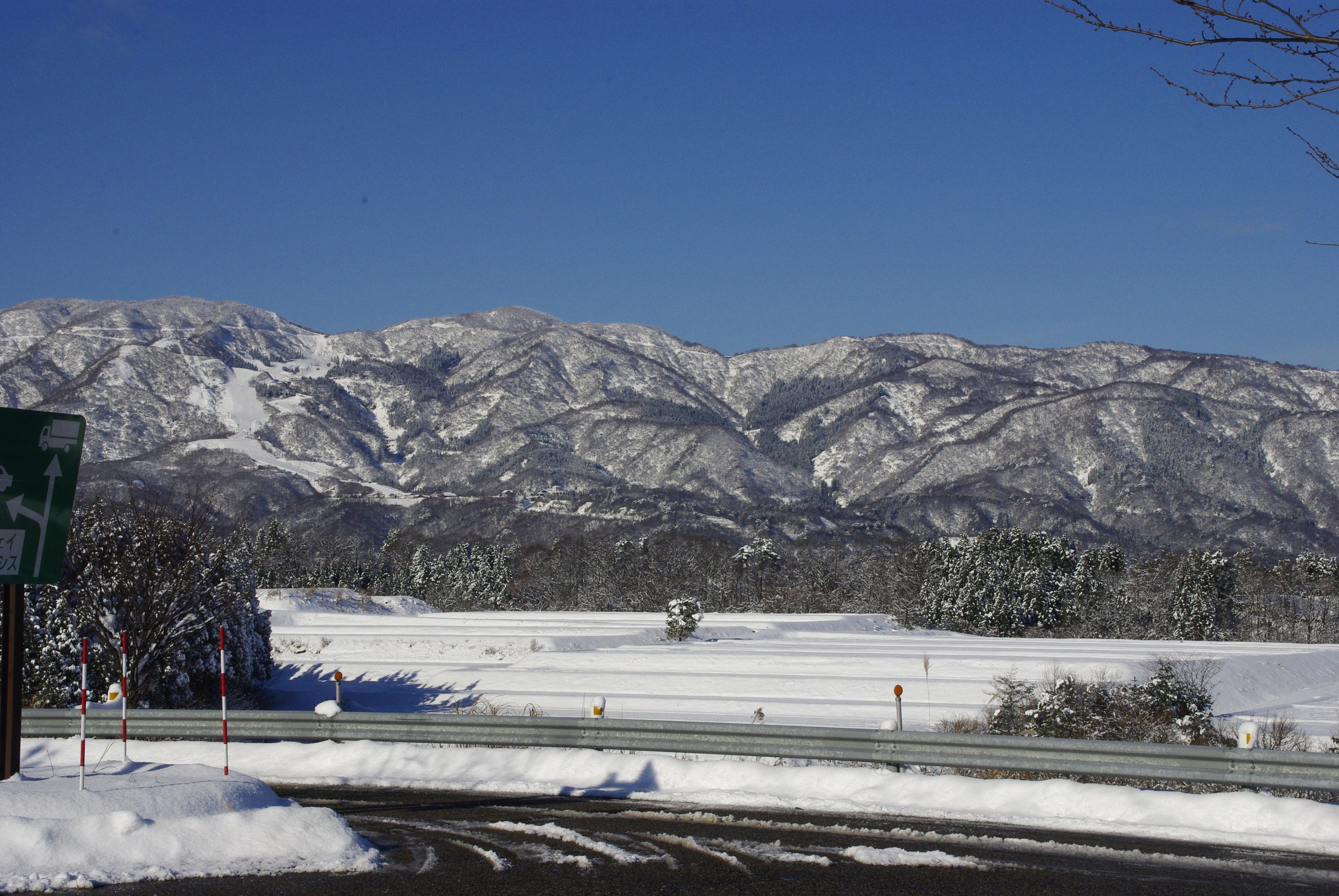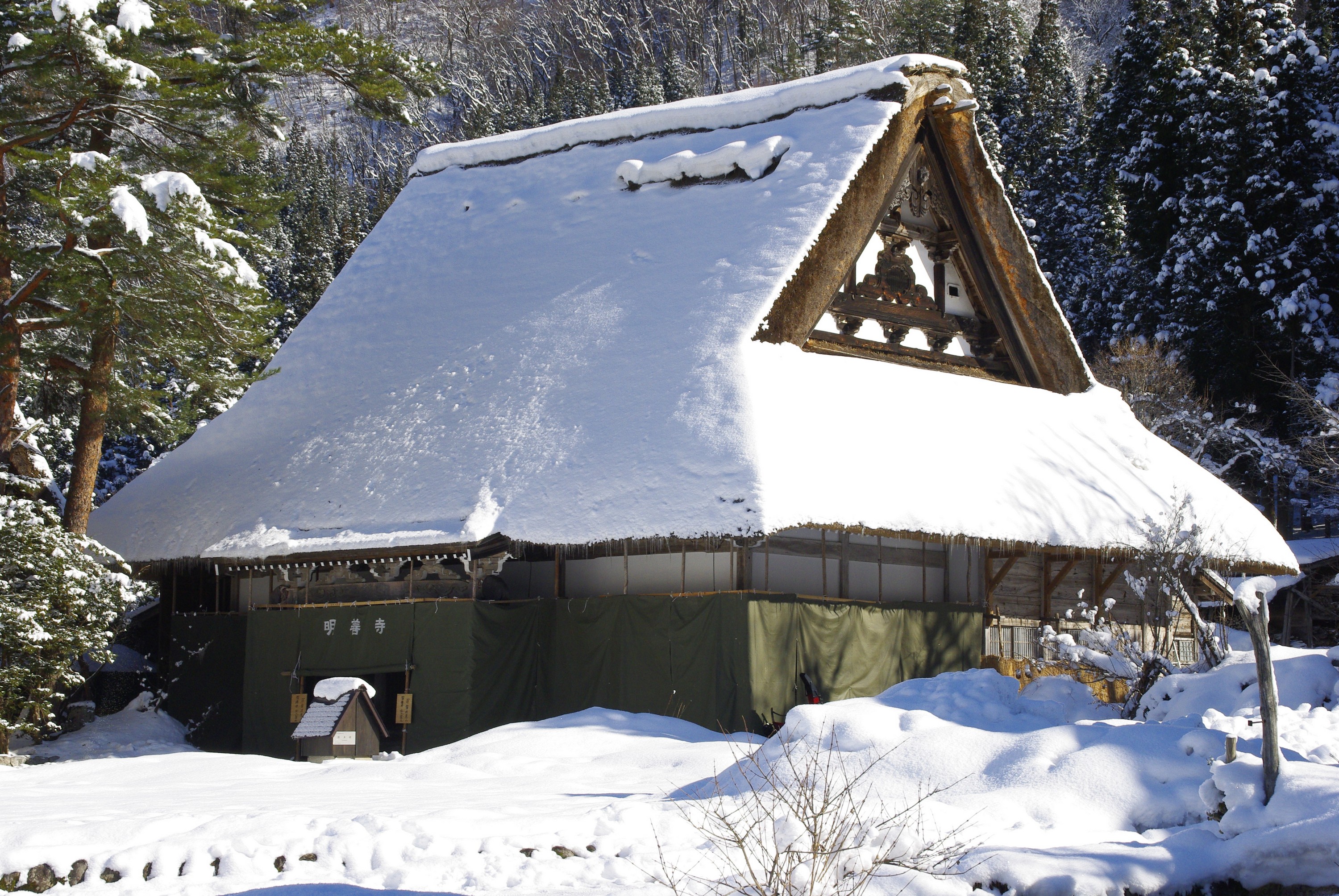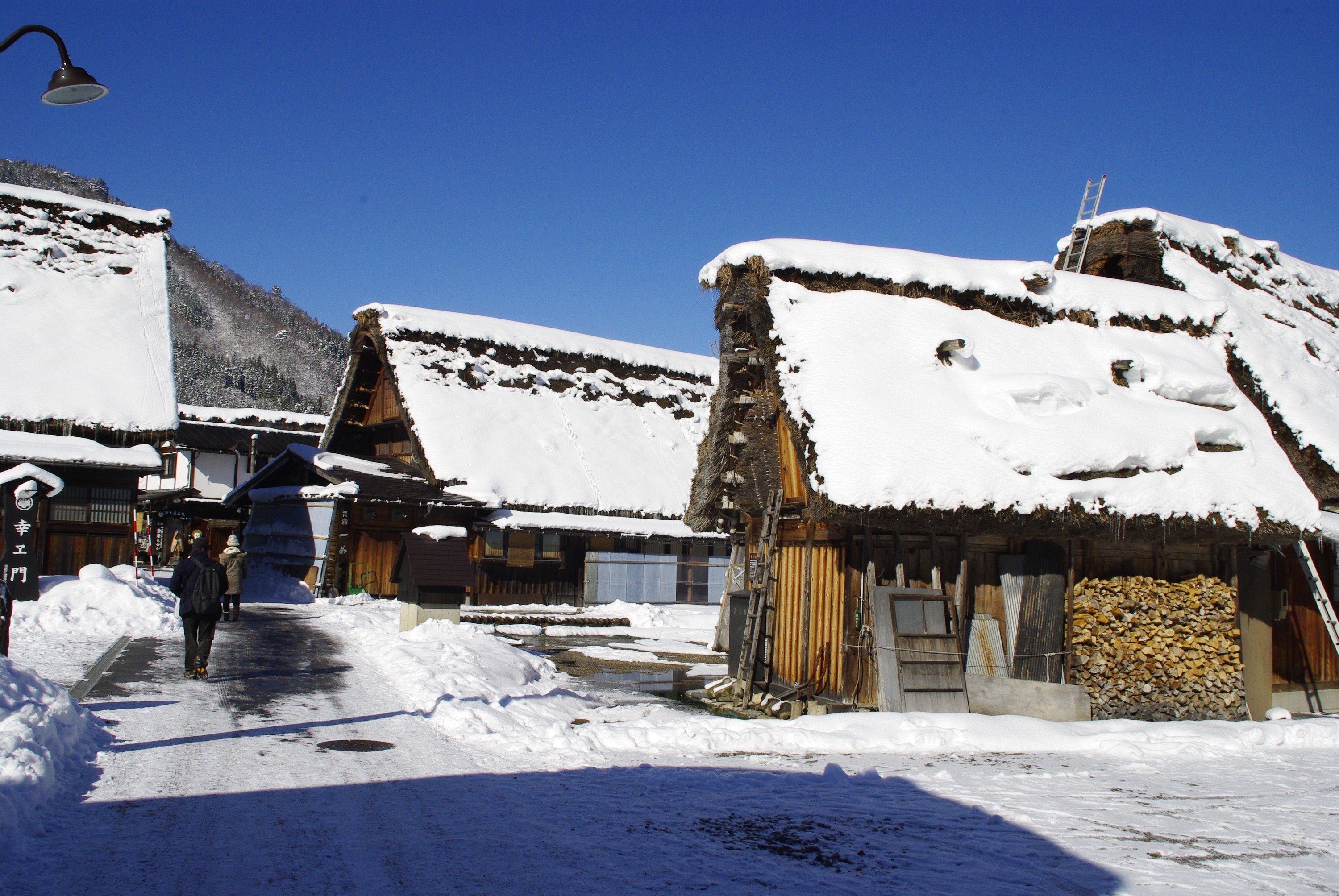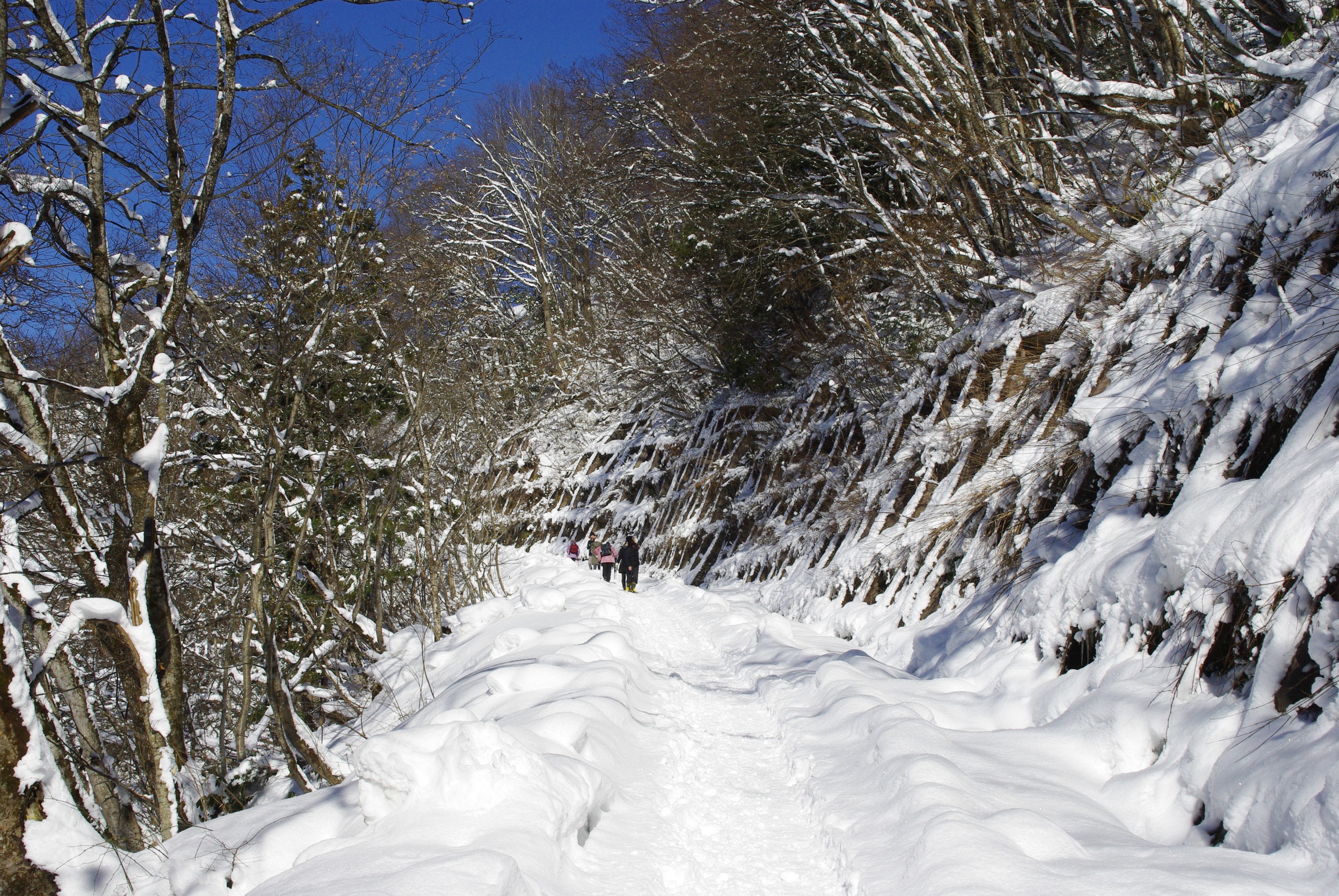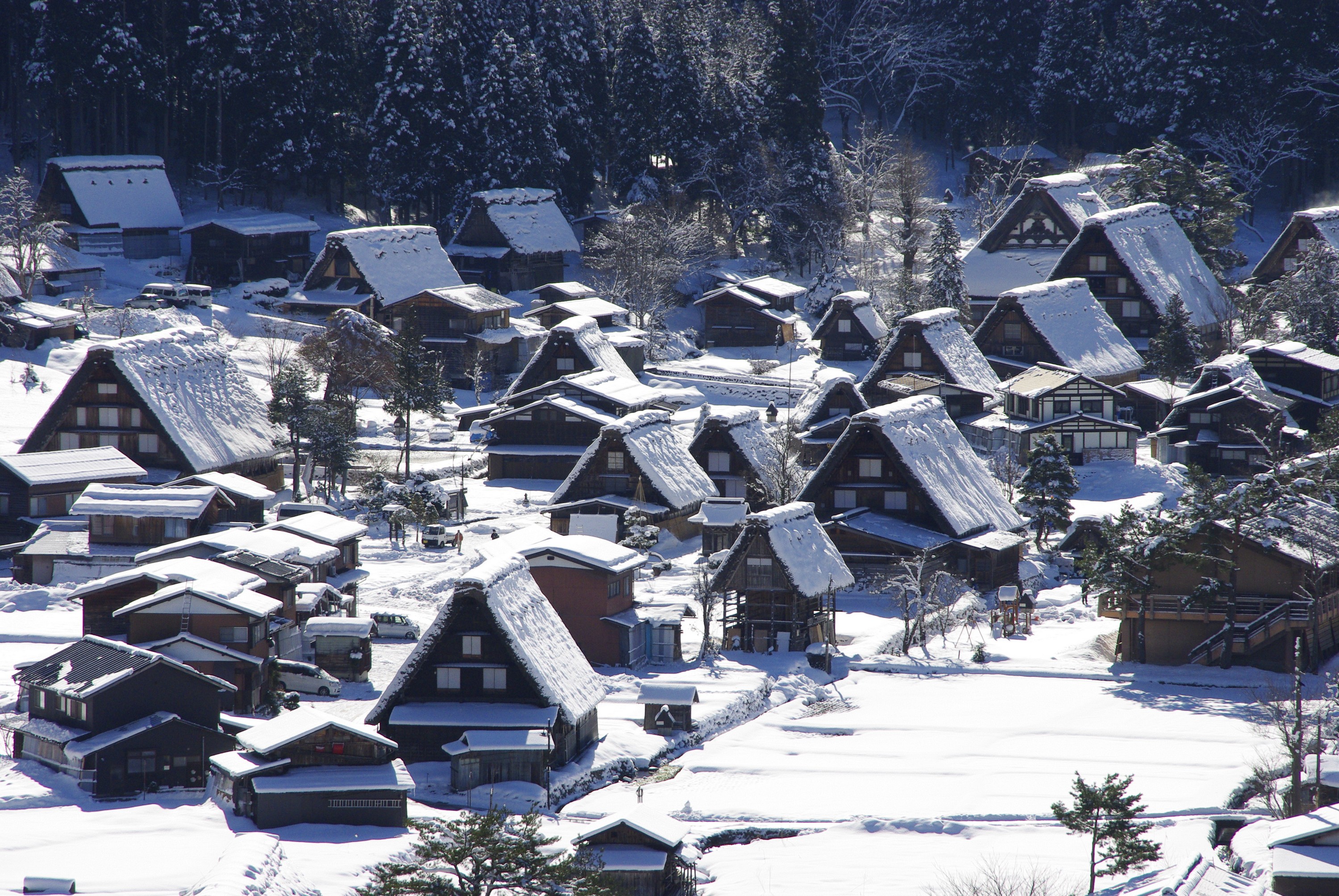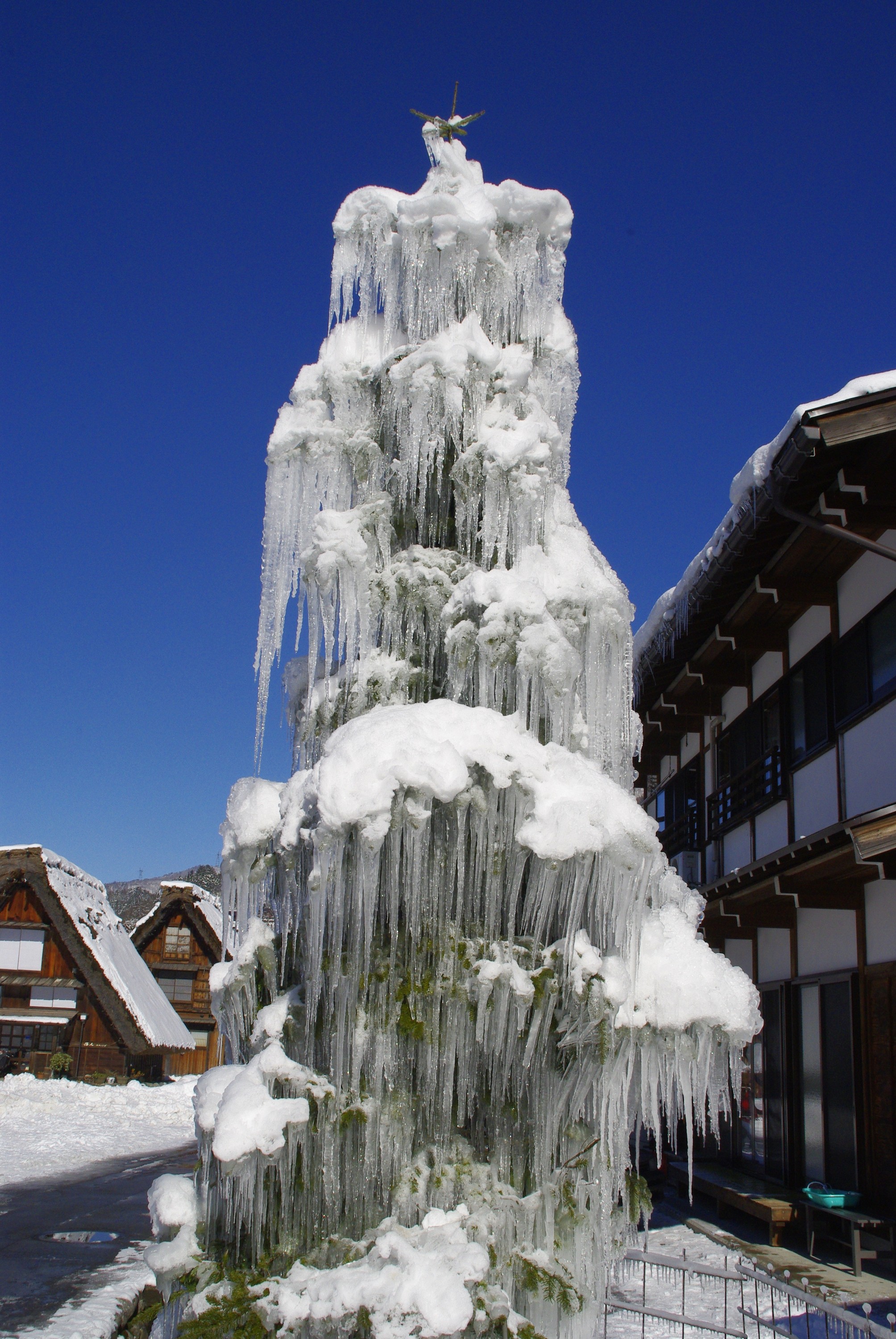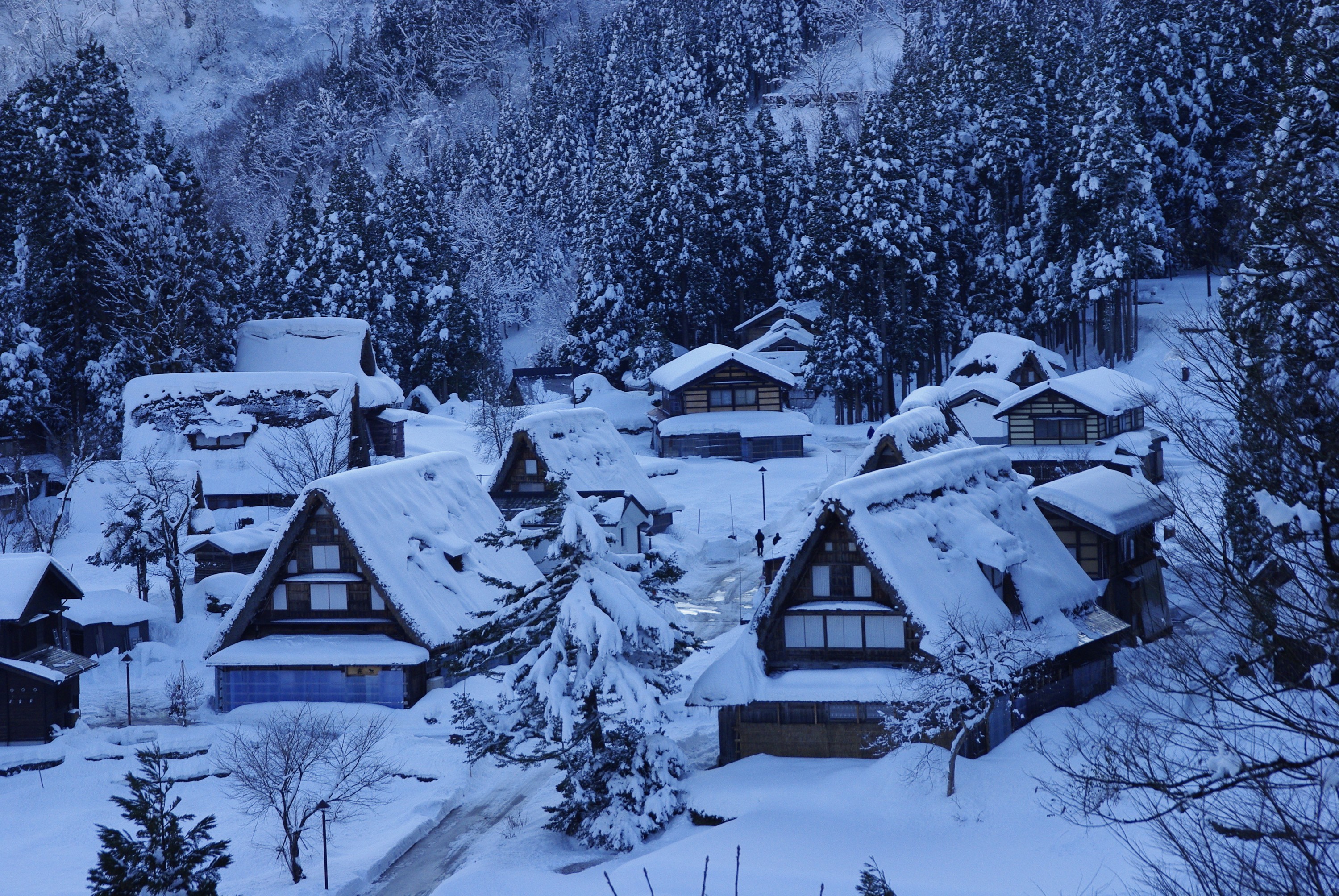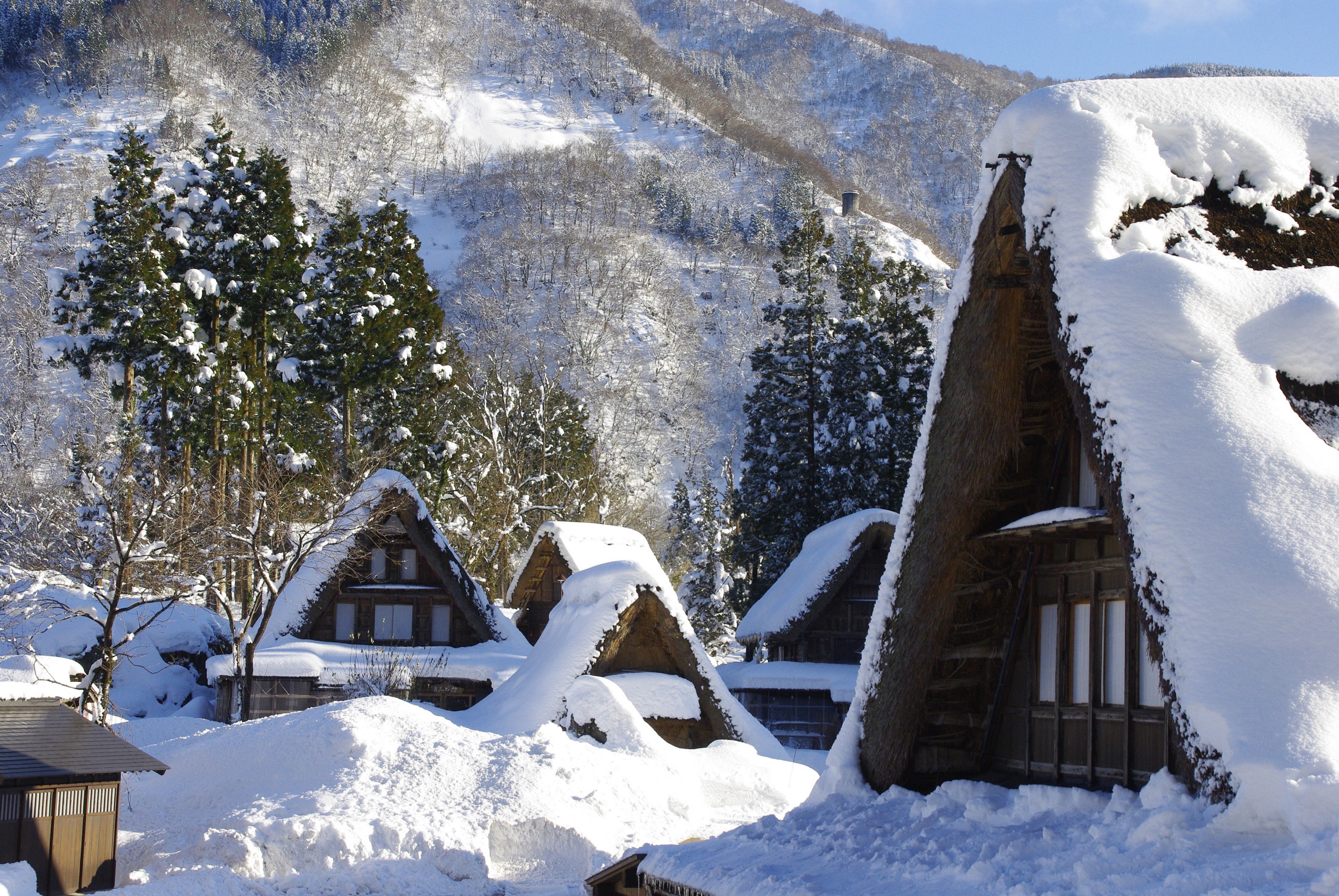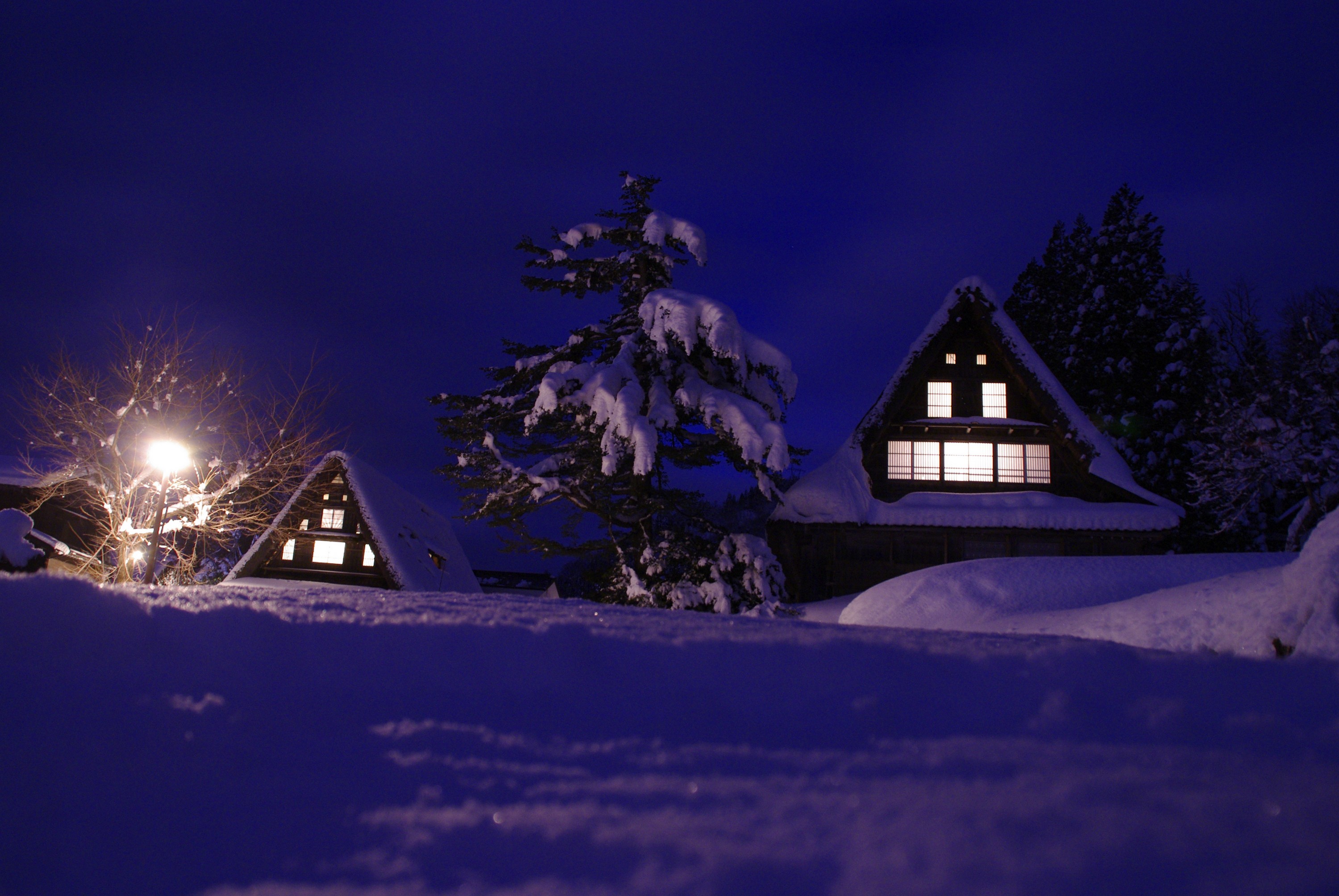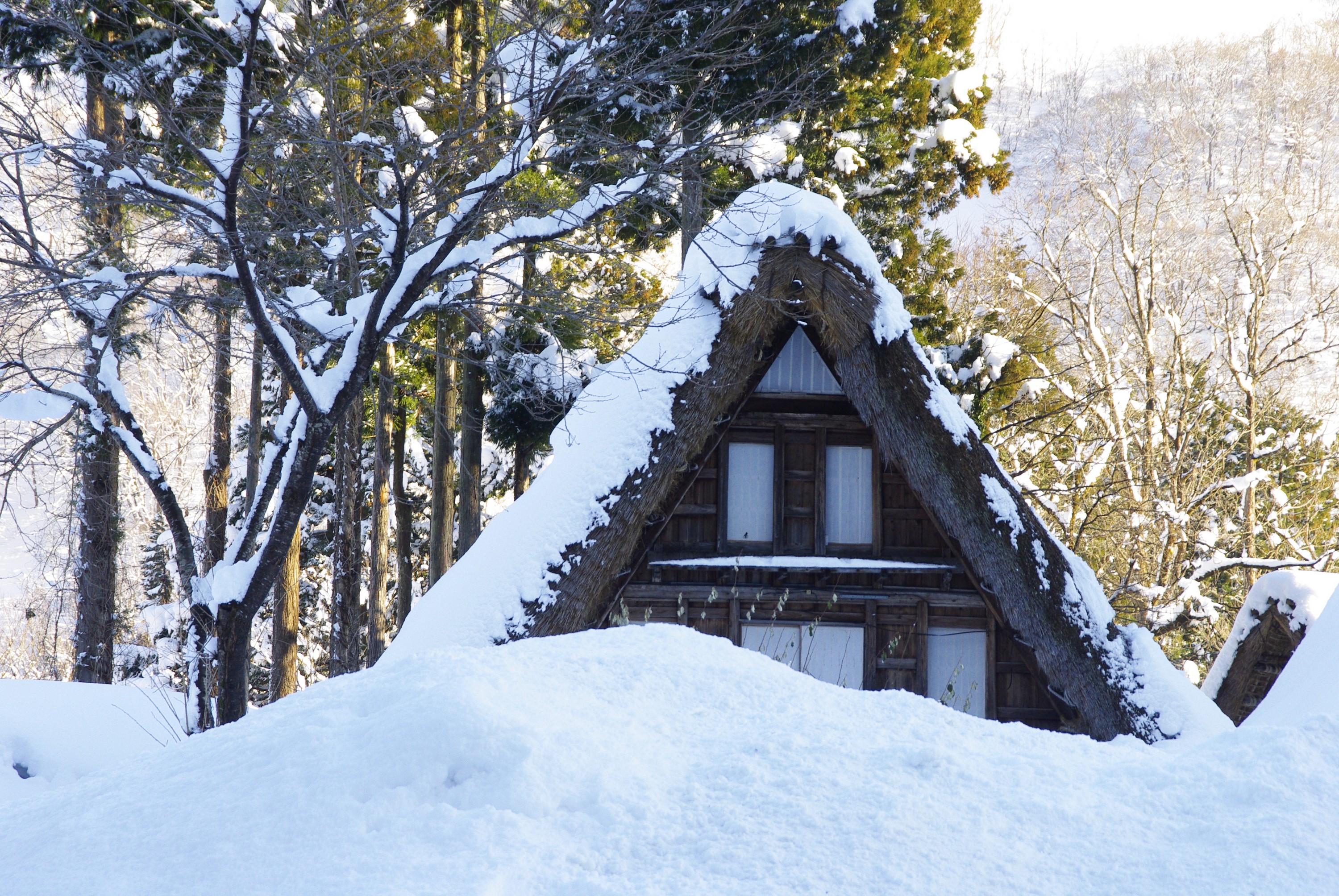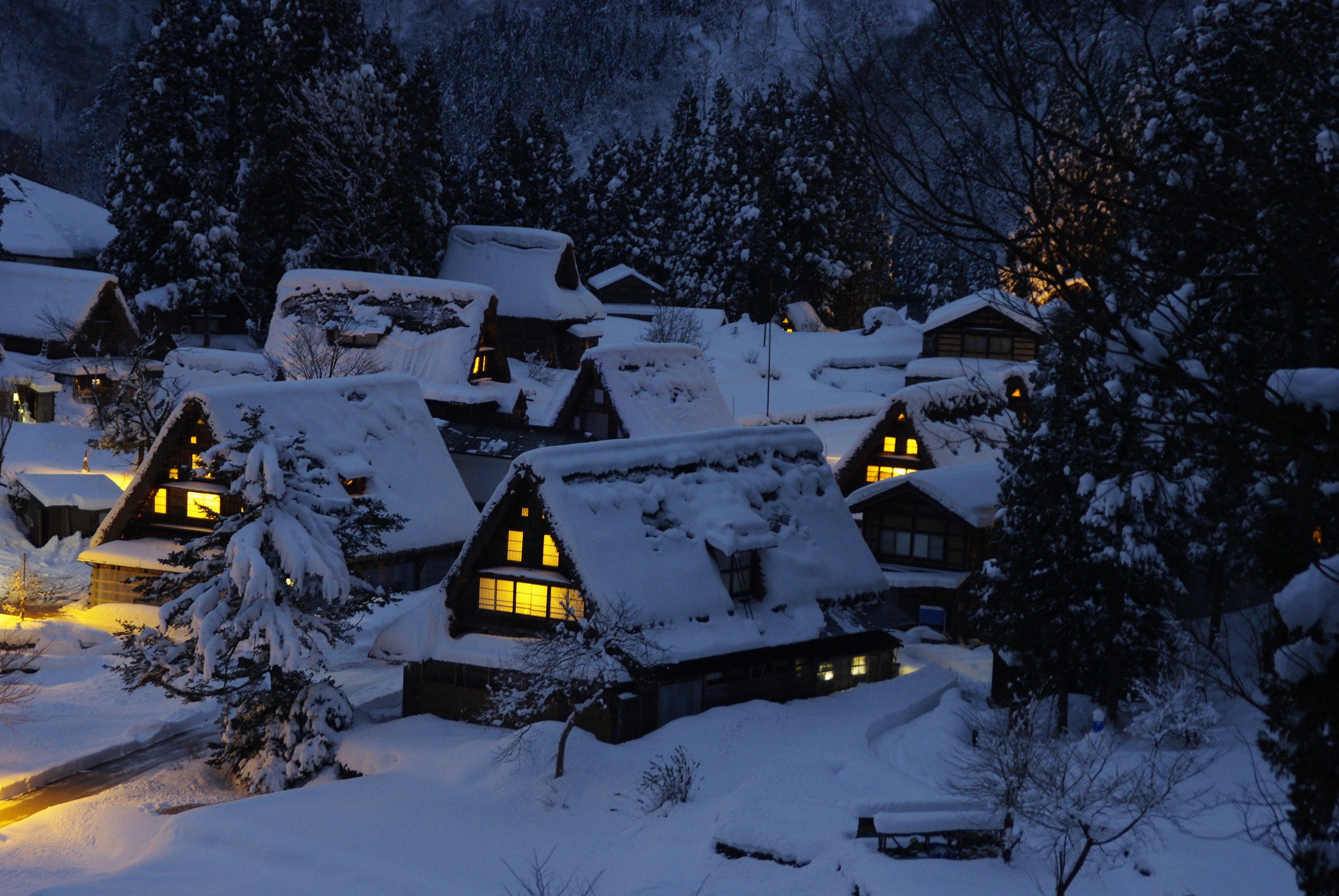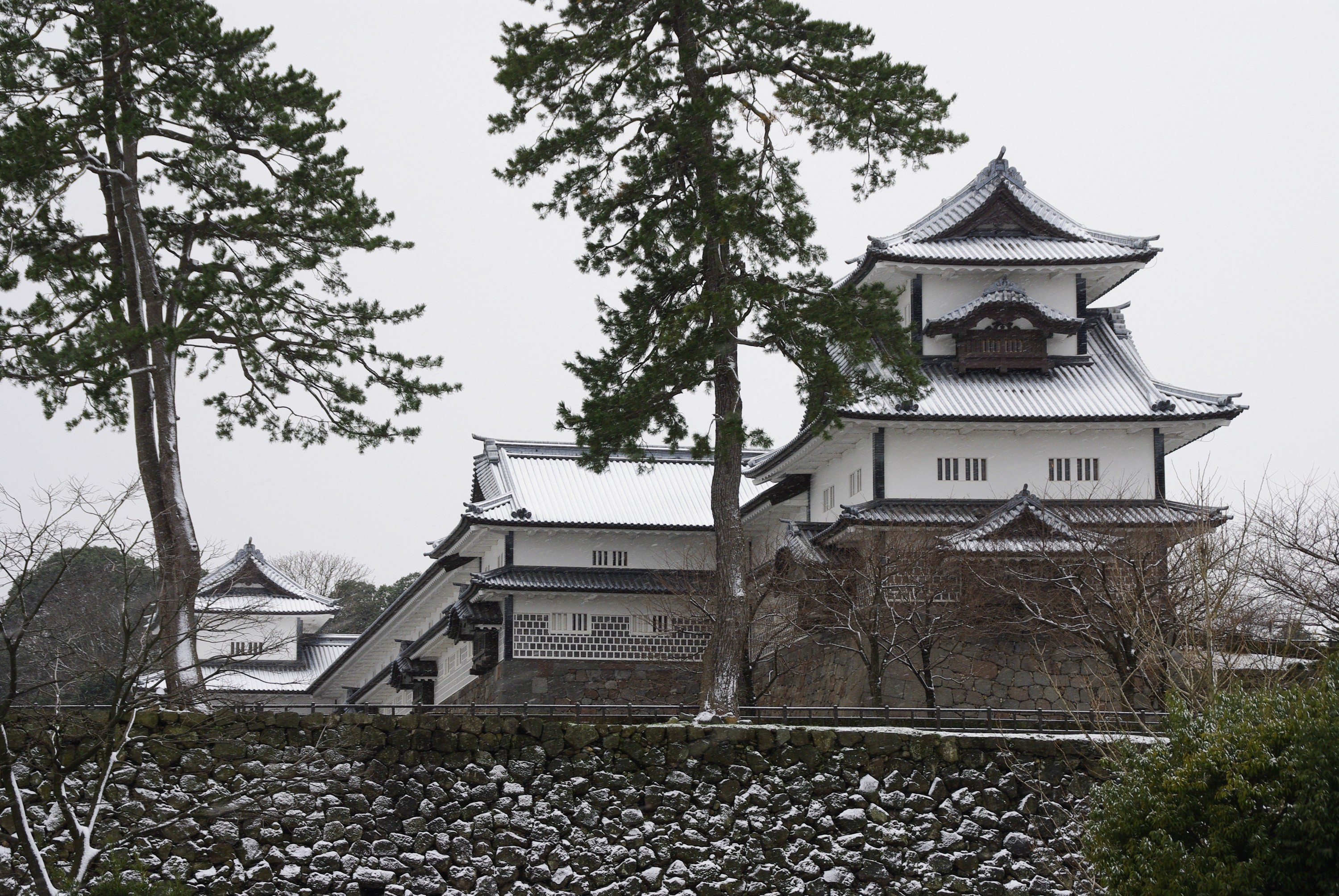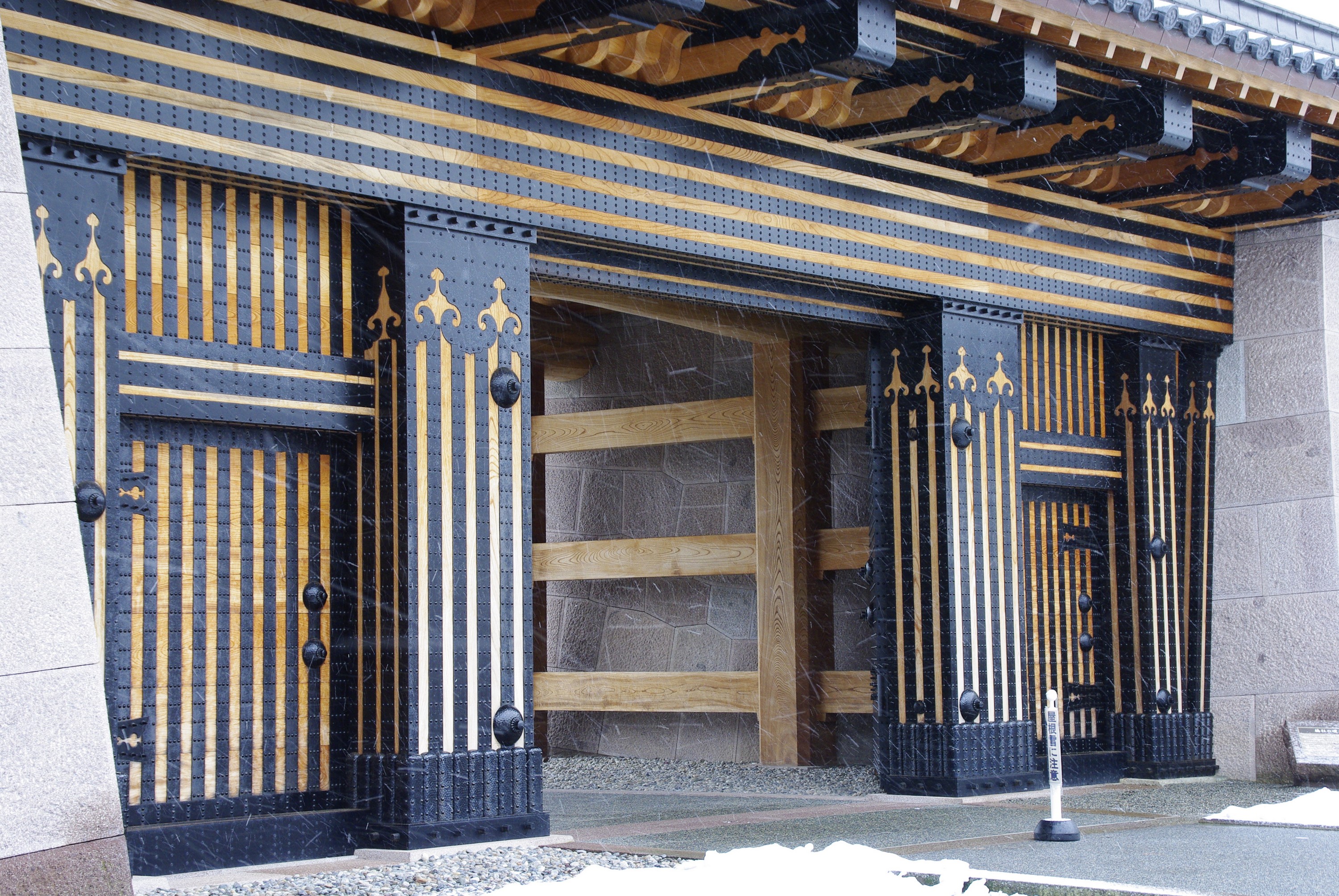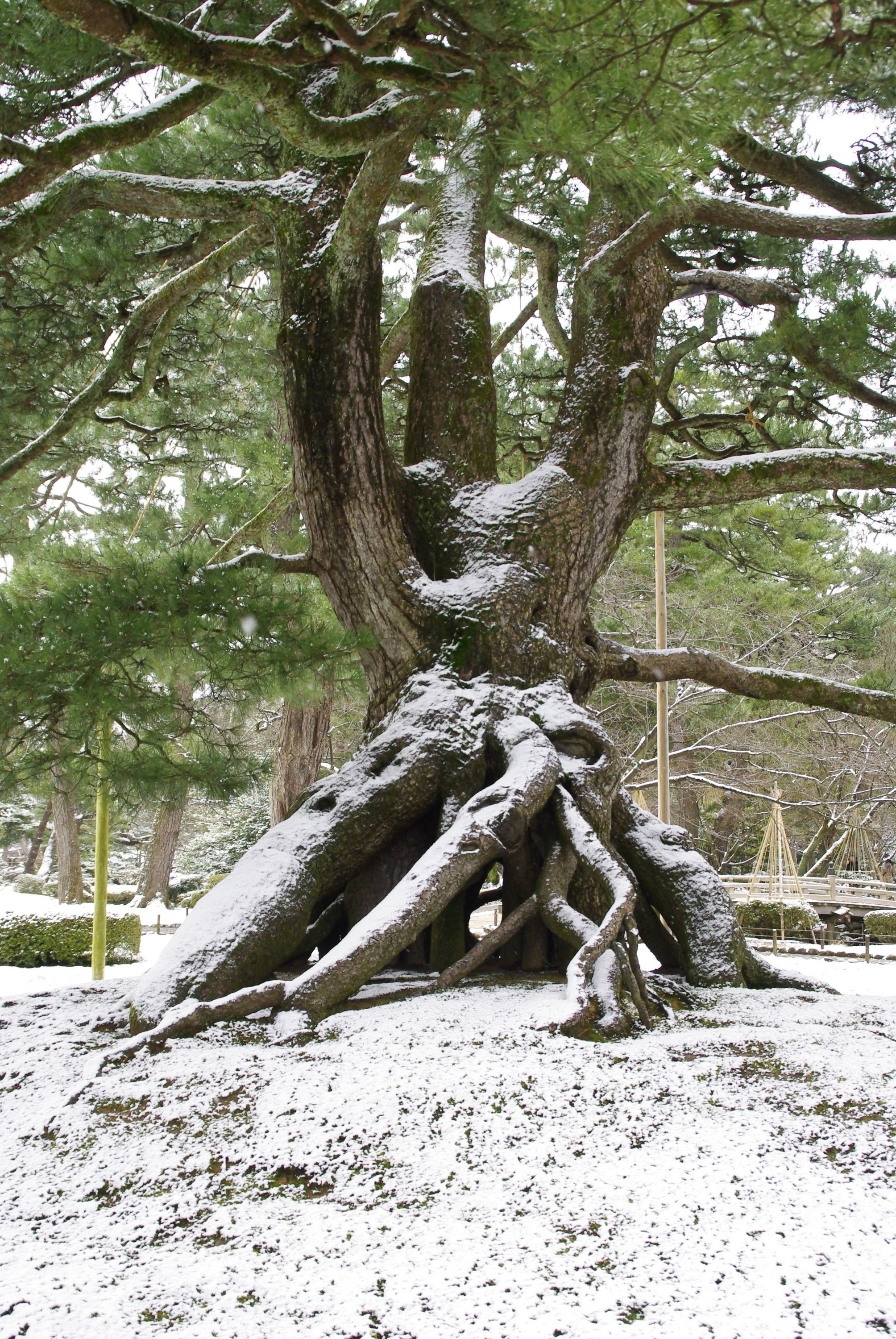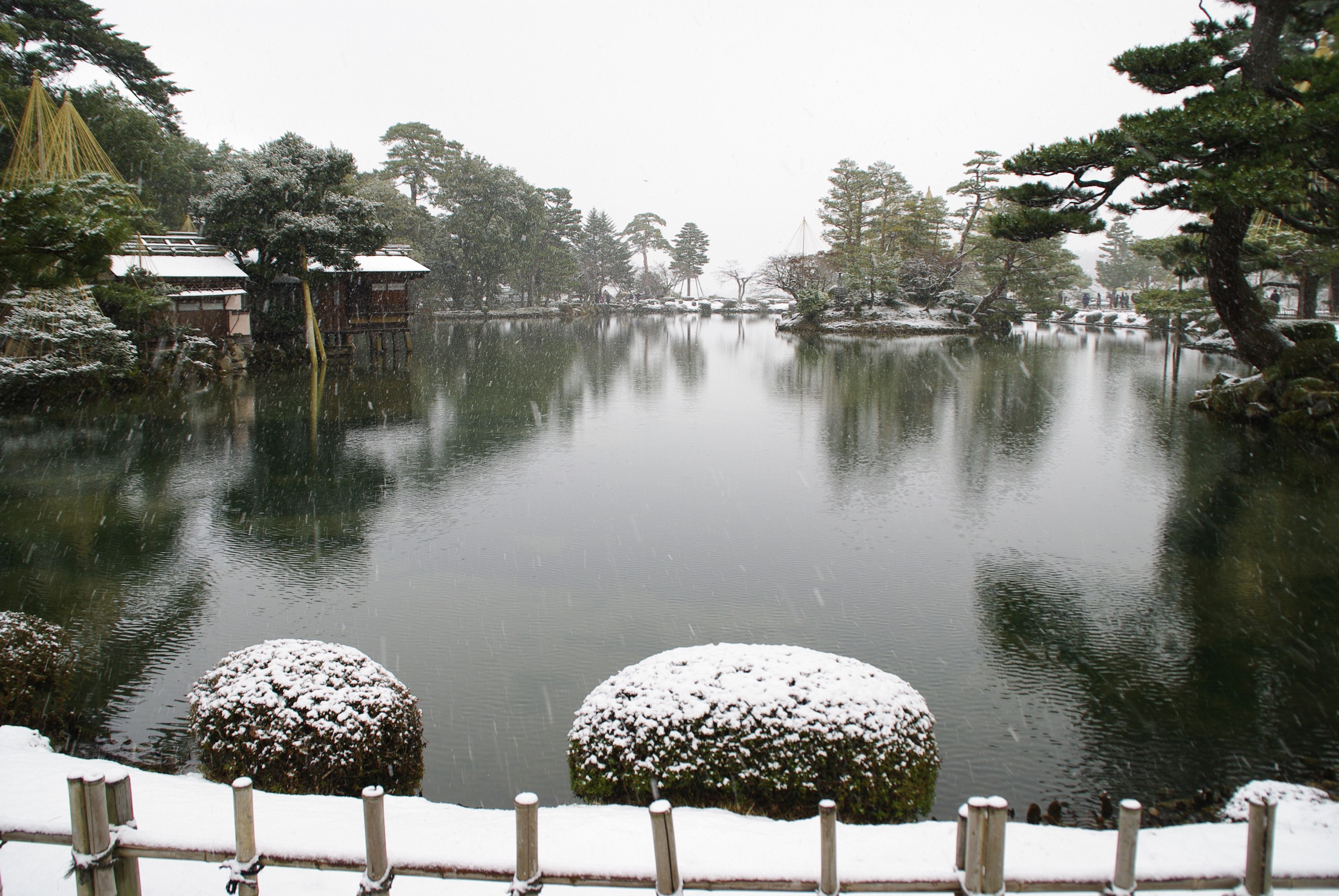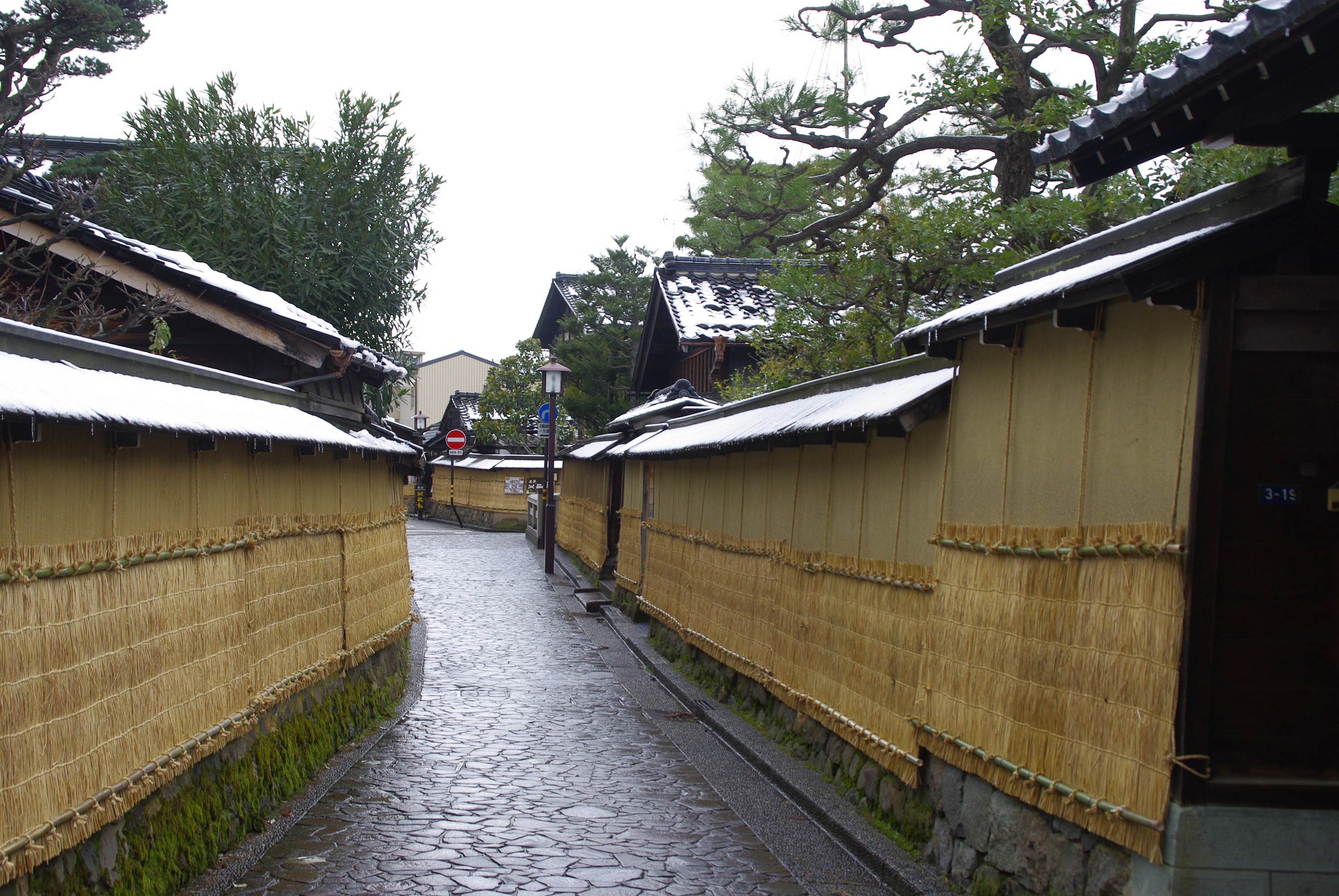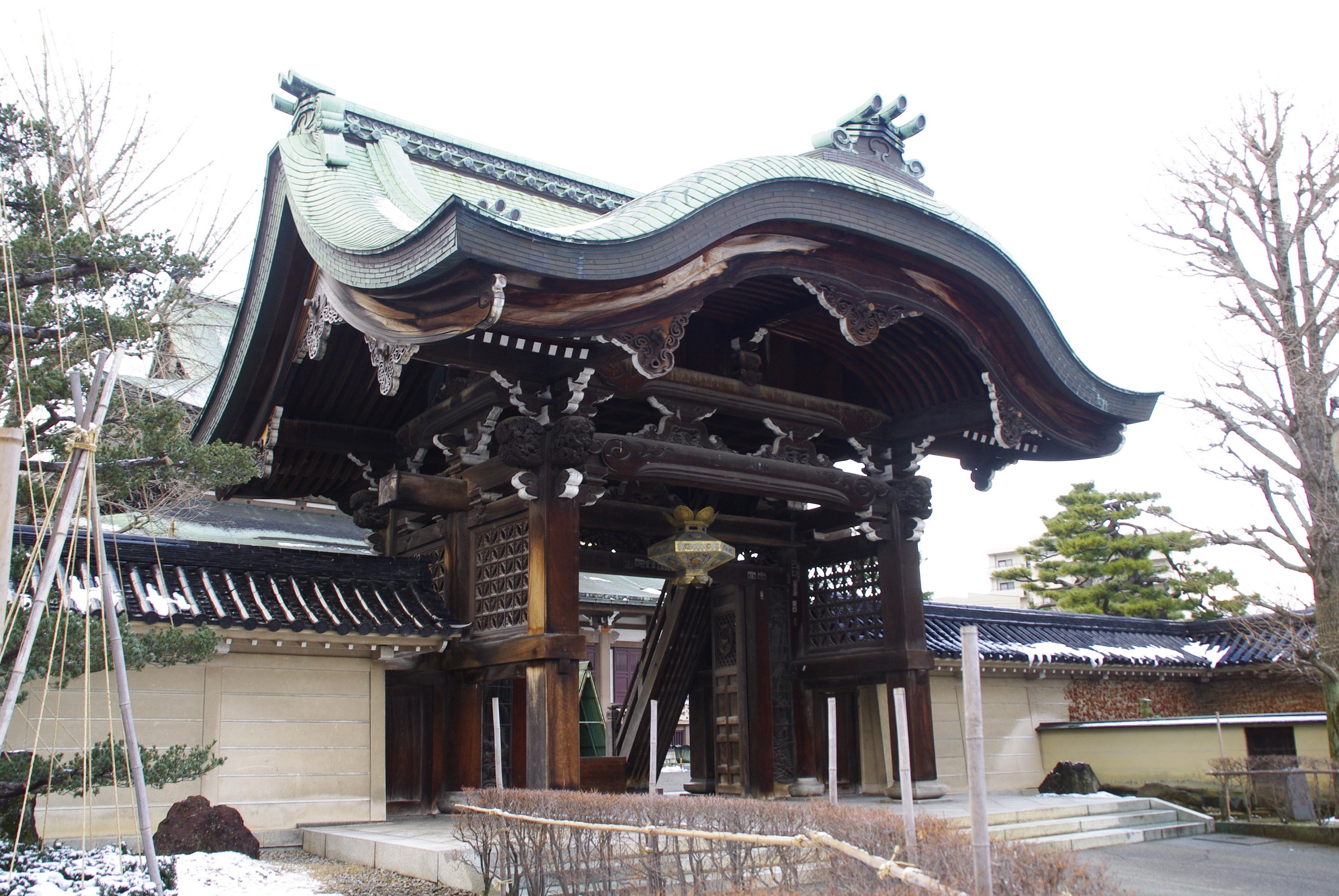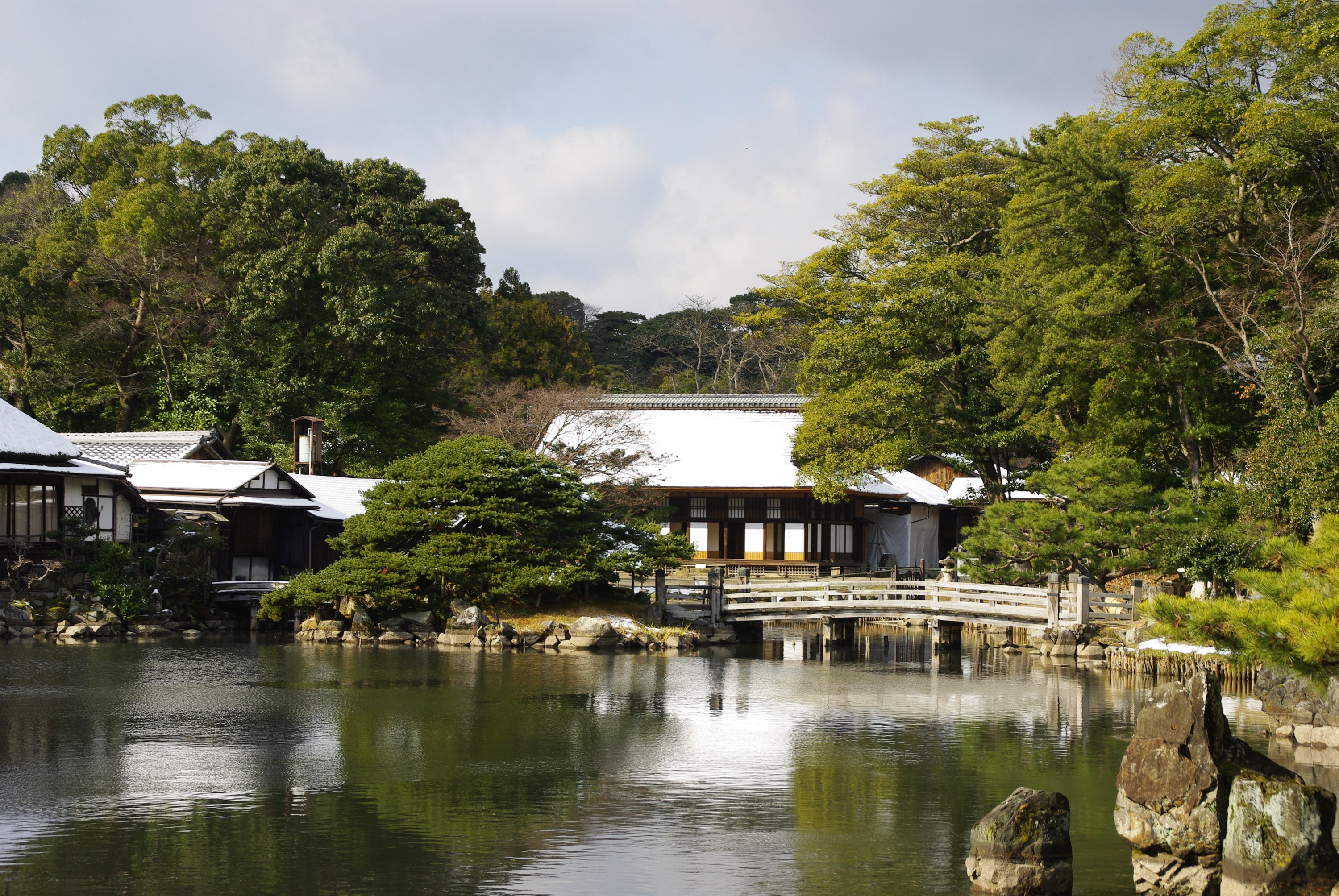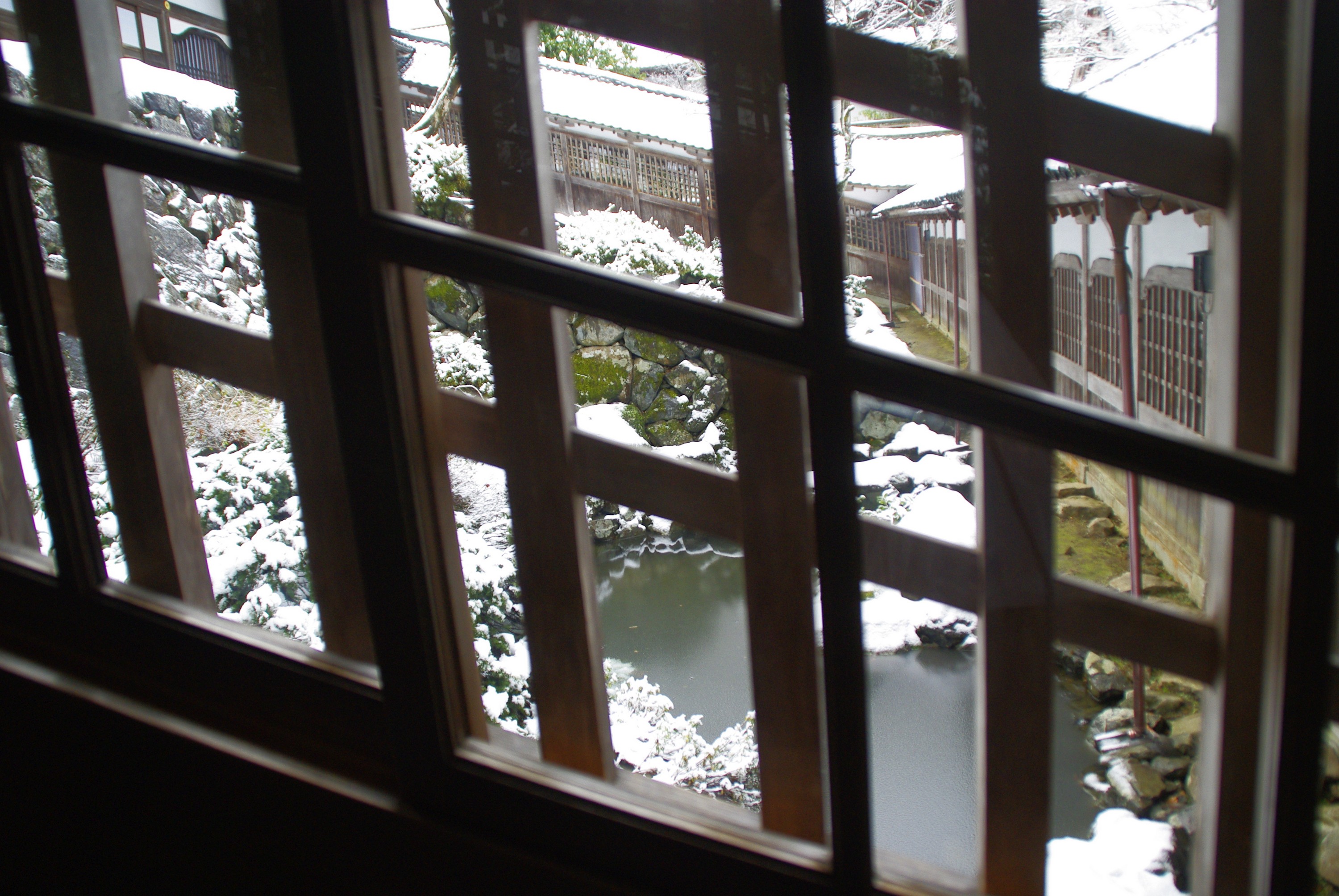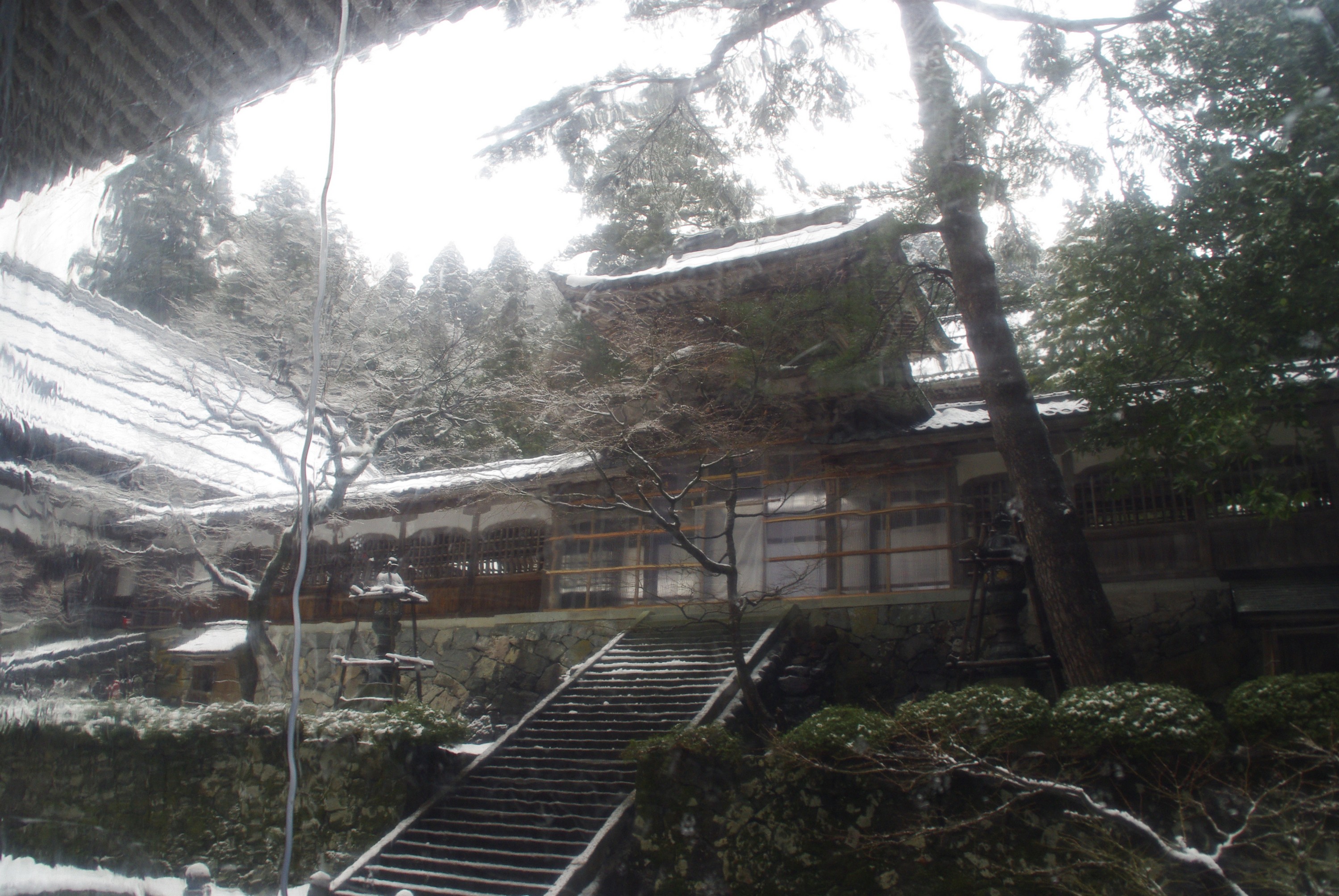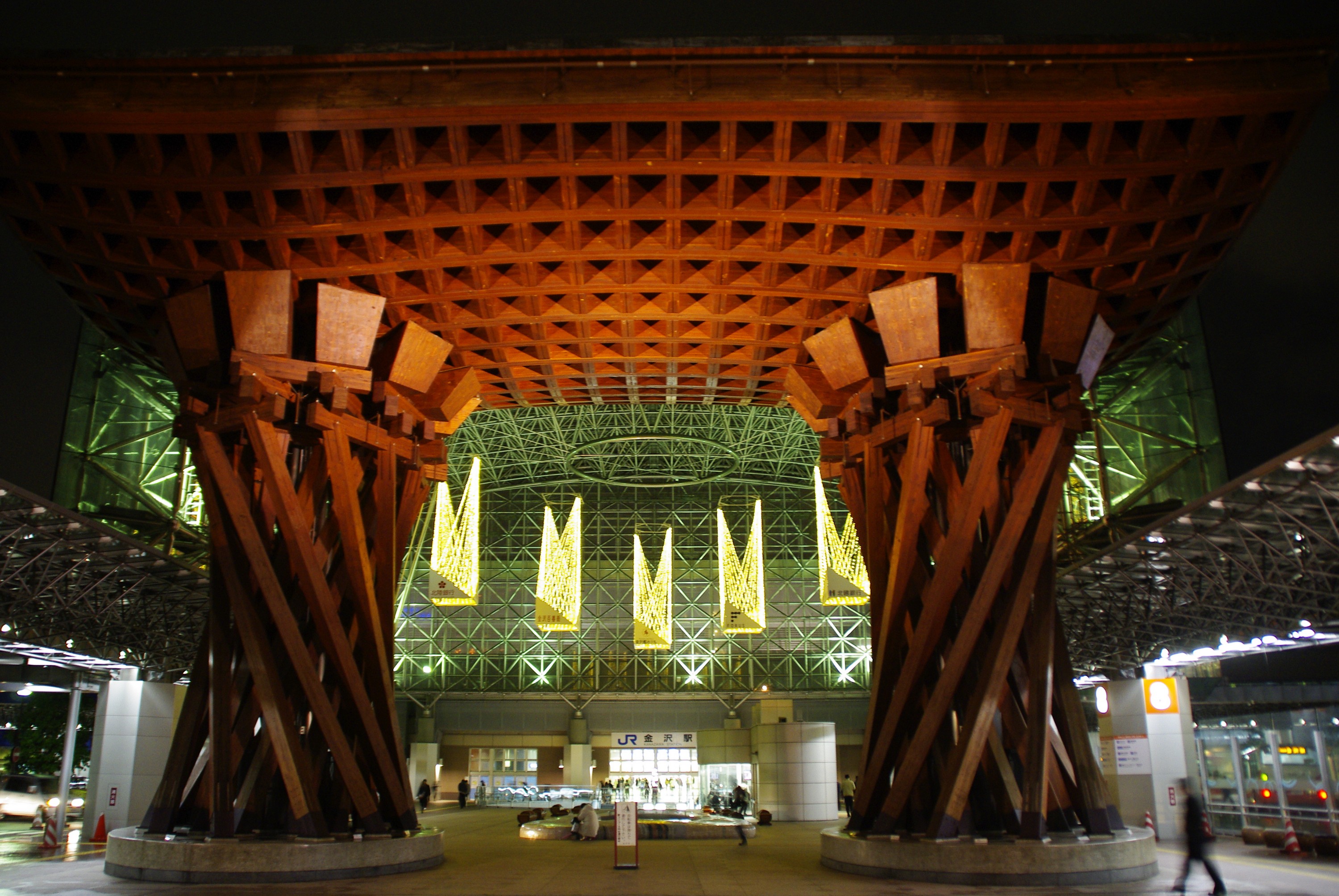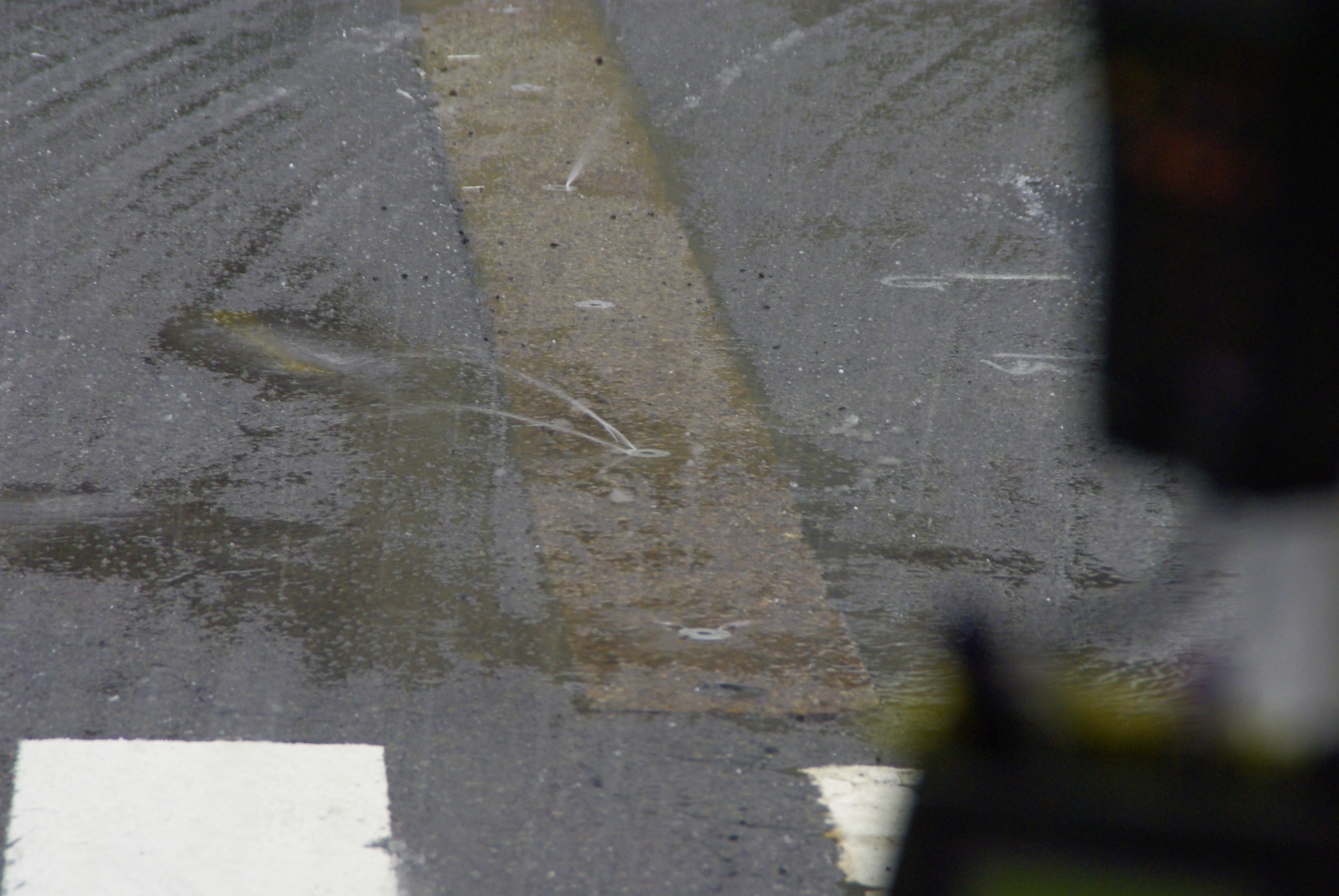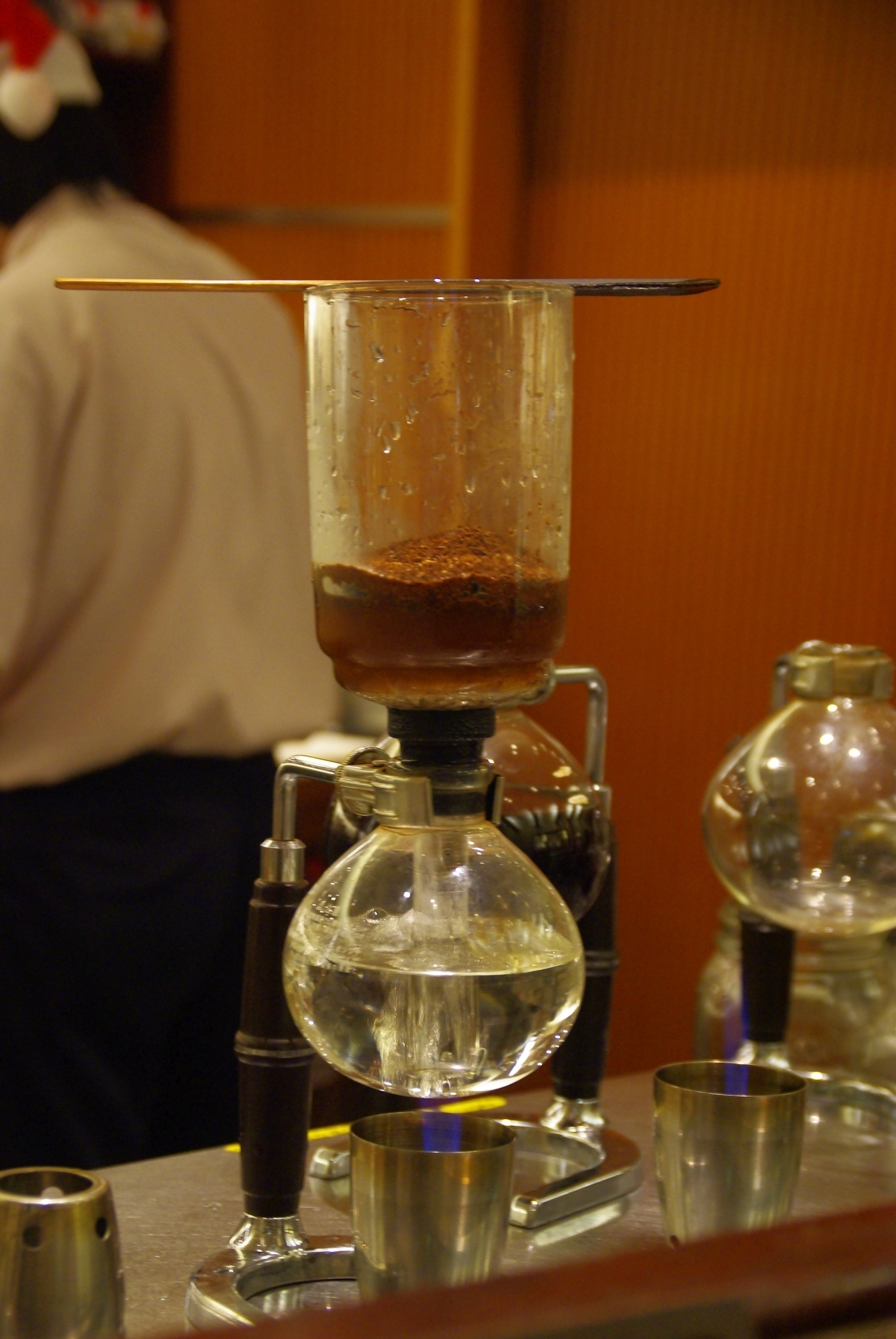After this exciting events from yesterday evening I need some rest. After a long japanese breakfast I start for a walk. At the door a Shiba Inu is waiting that doesn’t belong to the ryokan. He always tries to stay behind me. I turn quickly around. He doesn’t like it and instantly try to get out of sight again. He is following me a a few yards while I walk downhill to Tsumago.
After less than a mile I arrive the first houses of Tsumago. The road is covered with ice and not easy to walk. There os some snow, but not as much as in Kisofukushima. I arrive the old post town area at 9am. I am more or less alone. The shops open in one hour. I enjoy the quiet tourist-free atmosphere.
Tsumago
The old Tsumago is a long street with old houses. A remote place. There is no special house that sticks out. It is the complete ensemble. The perfect place for a samurai movie. This place covered with fog must be awesome.
The street splits into two ways. I decide for the stairs down. That was dangerous. The stairs are tilted and covered with ice. Something I didn’t expected. After a few meter the way goes up and meets with the second path. It is not easy to walk. Again there is ice. Now I am followed by a cat. Today I am haunted by japanese wildlife .. and there are bears in the mountains. I hope they hibernate.
I walk down the street passing the old rest places for travelers. At the end is a small water mill and a big ancient newsboard. I spot a small temple. Maybe I can take some pictures during the magic hour.
Now I want to start to walk the Nakasendo to Magome. On the way I will pass the ryokan. Until there the way is boring. It is part of the national road. I pass the houses behind the ryokan. I meet the Shiba Inu again. Now the Nakasendo is leaving the national road and enters the forest. Here there is less snow but it is easier to walk.
Nakasendo
This will be a peaceful walk. It goes uphill. The path is crossing the road several times. But I never recognized how close both ways are all the time. This Nakasendo is somehow a place half way to nowhere that exist outside of time. The weather is cold and sunny. This I call holiday. Now the way is splitting. Nakasendo to the left and a path to two water falls to the right. They are not far away. A minor diversion seems possible without any time problems.
The only thing that worries me is this tiny bell next to the signs. „Ring the bell hard against bears“ and a phone number below. The bell I know from Hokkaido where you should wear a tiny bell on your backpack. I wonder if this stationary bell is also successful. And why the phone number? If I face a bear I will definately do not call for help and wait for help. Or shall I give the phone to the bear, say „it’s for you“ and run?
The water fall is 5 minutes away. There are not very high but here in the middle of the forest they are well placed. The edges of the waterfall are frozen. That reminds me on the blog I found about people climbing up frozen water falls.
Next stop is a 250 years old cherry tree. The forest ended a dozen yards before. It goes steep uphill. Passing bamboo. This is the Magome pass. It is the border between Gifu and Nagano prefecture. This confused me while I was looking for a Ryokan. Magome and Tsumago have different predial numbers and post codes.
From this point on it should go downhill until Magome. But this part of the Nakasendo is boring because it follows the mainroad. At 2pm I arrive at the upper end of Magome. Here again is a big news board and the bus stop. The next leaves in one hour. That should be enough. Magome is not that big. But beautiful. In my opinion even better than Tsumago.
Magome
A 300m long paved way. Old houses on both sides like in Tsumago. Souvenire shops and ryokans everywhere. This city (like the complete Kisodani) is famous for Honoki wood. During the time of the samurai it was forbidden to the normal people to use this kind of wood. This law was intact until a few decades ago. That is the reason why the cities along the Kisodani are so old, weathered and run down. Many cities were given up and got lost. Tsumago and Magome survived and now are a living evidence of the past. Back to the souvenir shop. I buy some honoki sake cups.
A walk the street down to the water mill. Inside is a small generator and a display that shows, how much power the generator is producing. A nice approach towards green energy; speically after Fukushima. The street takes a left turn and a right turn before it ends. This side of Magome is not as beautiful as the upper part. Therefore I go back. I have a small chat with owner of the souvenir shop from before. Then I rush to the bus stop.
Looks like I have luck twice. While I was waiting for my ride back to Tsumago a bus is stopping and dozens of Japanese tourist are entering Magome. And the weather is changing. It is getting windy and cold. Looks like perfect timing and that I have used the best time of the day for the walk. I stroll thru Tsumago until it is getting dark. But I cannot find a good scenery. And after 5pm cars are allowed in the street and ruin the mood.
Tomorrow I travel back to Toyko. Therefore I embrace this remote place as good as I can. First I take a relaxing bath on the onsen of the ryokan. At 6pm I walk to the dinner room. Wow. A feast. Grilled fish, sashimi, vegetables, soup, tempura. I am full. Some nihonshu and another stop in the onsen before I go to bed … I mean futon.

